Inside the Chapel of the renowned Llandovery College are two War Memorials, one for the students and staff who gave their lives during the Great War, and another for the Second War. Men of the College also died during operations in Palestine after WW2, and during the Korean War. This page will serve to commemorate these men. (Some of these men are remembered below already, but there are many more to research and write up, so these will be added in due course). Many thanks are due to Mr. and Mrs. Harold and Pat Evans of Cardiff for allowing me to use material from their excellent Llandovery College Book of Remembrance, and to Mr. Hugh Thomas of Llandovery College for his assistance. Mike Berrell kindly sent me photos of both war memorials at the college.
The Great War, 1914-1918
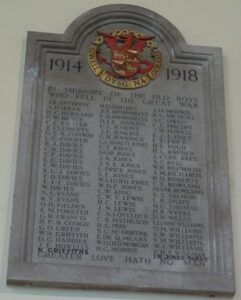
John Richard Anthony, Captain, Royal Welsh Fusiliers. John was the son of Alderman William and Jane Maria Anthony, of The Lodge, Pwllheli, and was educated at Llandovery between 1898 and 1902. John practiced as a solicitor at Pwllheli prior to the war, and served at the outbreak of war as a Territorial in the Royal Welsh Fusiliers. John volunteered for the Royal Flying Corps, and after training as a Pilot was attached to 1 Squadron. John flew a Nieuport 17 single seater fighter with the squadron, and his aircraft was Serial A6678. On 25 May 1917 John was on patrol above Houthem when he came under attack by four German fighters. He showed great gallantry during the one sided fight, but was shot down and taken prisoner. However, it was later confirmed that he had died of wounds received in this action on 25 May 1917. John was 33 years old, and is buried at Mendinghem Military Cemetery, Proven, Belgium.
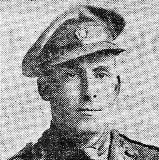
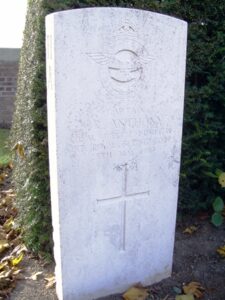
Arthur Barker, Second Lieutenant, Royal Garrison Artillery. Arthur was born on 12 July 1891, the son of Abraham and Mary Hannah Barker, of 19, Burnett Avenue, Bradford, Yorkshire. He had been a member of the Classical staff at Llandovery College until 1917, when he joined the Royal Horse Artillery. He was commissioned on 13 May 1918 and was posted to the 150th Heavy Battery, Royal Garrison Artillery. Arthur survived the war, but was sadly accidentally killed in Germany on 20 December 1918, whilst serving with the Army of Occupation. He was 27 years old, and is buried at Cologne Southern Cemetery, Germany.

Herbert Clifford Bernard, Colonel, Royal Irish Rifles. Herbert was born on 15 July 1865, the son of Robert Bernard, M.D., R.N., Deputy Inspector General of Hospitals and Fleets, and Sarah Augusta Clifford. He was educated at Llandovery College and then passed through Sandhurst as Queen’s Cadet. Herbert was gazetted to the 67th (Hampshire) Regiment in 1884, and in 1885 joined the Indian Army, with whom he served in the Burmese War (1885-1891). He Commanded the 45th (Rattray’s) Sikhs from 1909 to 1914, after which he retired from the Indian Army. In 1898 Herbert married Miss Ina Hogg of Melbourne, who died in 1908. At the outbreak of war, Herbert was given Command of the 10th Battalion, Royal Irish Rifles, attached to 107 Brigade, 4th Division, and he was with them at the opening of the Battle of the Somme, when he was killed in action by shellfire in Thiepval Wood on 1 July 1916, aged 50. He is buried at Martinsart British Cemetery, France. Herbert is also remembered on a Memorial in the Parish Church of St Bridget, Bridstow, Nr Ross-On-Wye, Hereford.
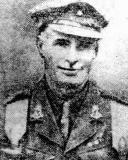
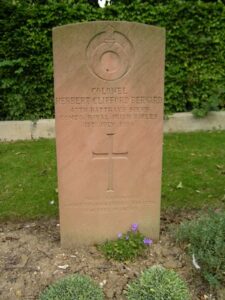
William Percy Brace, Sub-Lieutenant, Royal Naval Volunteer Reserve. Percy was the eldest son of William Brace, M.P., Under Secretary at the Home Office, and Nellie Brace, of Abertillery. His father was a famous unionist, who strove for better conditions for coal miners. Percy was educated at Llandovery College from 1906 to 1909, and then resided at Bryn Ivor, Abertillery prior to the war. Percy died of influenza whilst on active service at H.M.S. Pembroke, the Royal Naval Shore Establishment at Portsmouth, on 25 October 1918. He was 26 years old, and was buried with full military honours at Newport (St. Woolos) Cemetery, Gwent, on the same day that Admiral Jellicoe visited the town. The photograph of Percy is courtesy of Shaun McGuire.
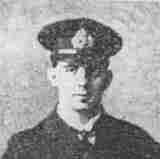
Clement Cyril Carter, Private, 23778, Worcestershire Regiment. Clement was born in Manchester on 12 June 1888, the son of Reverend William David Carter and Mary Emma Carter. The family later resided at Medhurst, Malvern, Worcestershire, and Clement was educated at Llandovery College from 1899 to 1904. Clement then went to Canada, spending several years farming at Alberta and New Brunswick prior to the war. At the outbreak of war Clement returned to England, and on 22 July 1915 enlisted into the Worcestershire Regiment. He was posted to the 3rd Battalion, Worcestershire Regiment, which was attached to 74 Brigade, 25th Division. The Division landed in France on 26 September 1915, and was posted to the Vimy area, where they defended Vimy Ridge against a German attack in May 1916. It then moved to the Warloy area and attacked on 3 July 1916 near Thiepval. It fought throughout the Battle of the Somme, and then moved to Ploegsteert, where it held the line for the months leading up the Battle of Messines in June 1917. After fighting at Messines, the Division moved north, and at the beginning of July 1917, Clement’s Battalion was serving in the front line at Ypres. On 8 July, the Battalion moved to Lille Gate, at Ypres, and on 9 July 1917, were put to work digging trenches at Hooge, astride the Menin Road. The men were spotted by the Germans, and came under heavy enemy shellfire, which killed Clement. He was 29 years old and is commemorated on the Ypres (Menin Gate) Memorial, Belgium. Contemporary reports state that he was buried at Hooge, but many graves were lost in the area.
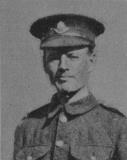
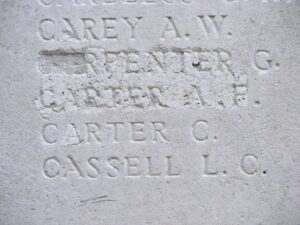
Thomas George Clements, Private, G/50992, Royal Fusiliers. Thomas was born in Kingston-Upon-Thames in 1885, the son of Thomas George Clements, and of Jane Killeen Clements (nee Jenkins). His mother was from Aberystwyth, and his Guardian was Mr. Hugh Hughes, Solicitor, of Aberystwyth. Thomas was Educated at Llandovery College between 1899 and 1903, and at the outbreak of war was living at Glynpadarn. He enlisted into the Army at Aberystwyth, and joined the 22nd Battalion (Kensington), Royal Fusiliers, which was an ‘elite’ (Public Schoolboy) Battalion, attached to 99 Brigade, 2nd Division. The Division had been on the Western Front since the outbreak of war, and Thomas’s Battalion joined them in November 1915. The Division had just fought at the Battle of Loos, and was near the Hohenzollern Redoubt. In the summer of 1916 the Division was on the Somme, and took part in the Battle of Delville Wood and the Battle of the Ancre, and the ensuing Operations on the Ancre. In March 1917 the Division followed the German Retreat to the Hindenburg Line, and in April fought at Arras, during the First Battle of the Scarpe, the Battle of Arleux and the Third Battle of the Scarpe. During the fighting at Arras, Thomas was severely wounded and taken prisoner. He was transported to Germany, where he died from his wounds on 12 May 1917. He was 32 years of age, and is buried at Cologne Southern Cemetery, Germany.

Leonard Gosse Cooper, Second Lieutenant, South Wales Borderers. Leonard was born on 15 June 1892, the youngest of three sons of Walter Percy and Emily Frances Cooper, of Ambleside, Abergavenny. Educated at Llandovery between 1903 and 1910, Leonard played at forward for the School XV. Leonard had distinguished himself at Llandovery and gained a Classical Scholarship to Jesus College, Oxford, and while at Oxford he was awarded the Goldsmith’s Exhibition, and First Class Honours in Classical Moderations in 1914. The Senior Examiner at Oxford expressed the view that Leonard ought to devote himself to research in the Classics, but at the outbreak of War in 1914, he applied for a commission in the Army, and on 29 August 1914 was gazetted Temporary 2nd Lieutenant into the 4th Battalion, South Wales Borderers. The Battalion was attached to 40 Brigade, 13th (Western) Division, and on 28 June 1915, embarked for Gallipoli aboard the ‘Megantic’, intending to assemble at Mudros. However, a change in orders meant that the ship was diverted directly to the Gallipoli Peninsula, where the Battalion landed on V Beach, Helles. From V Beach they marched to Gully beach on 15 July. After a stay of two weeks they were sent to Anzac as part of the Left Covering Force in readiness for the August Offensive. Leonard was in charge of No.12 Platoon of ‘C’ Company, which was occupying a rough knoll at Damakjelic Bair, when on 9 August 1915, the Turks attacked in semi-darkness. ‘C’ Company had no time to strengthen their position, and in the fighting Leonard was killed by Turkish gun fire. His Commanding Officer described him as “an officer of great ability and promise, who will be severely missed.” Leonard was 23 years old. He was reported to have been buried in the 29th Field Ambulance Cemetery, but his grave was lost, and he is commemorated on the Helles Memorial, Gallipoli.
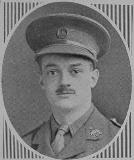
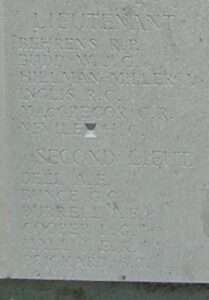
Benjamin Jones Davies, Captain, South Wales Borderers. Benjamin was the son of Griffith and Catherine Margaret Davies, of The Lodge, Llandyssul. Benjamin was educated at Llandovery 1900 from 1905, and after leaving Llandovery, entered St. David’s College, Lampeter, where he became Senior Scholar and graduated B.A. In 1912 Benjamin was a cadet in the Oxford University O.T.C., and in the July of that year was listed as a 2nd Lieutenant, in Reserve of Officers O.T.C. In August 1914, Benjamin Davies joined the University and Public Schools Battalion, Royal Fusiliers, and on the 7th August 1914 was commissioned into the 3rd Battalion, South Wales Borderers. On 12 March 1915 Benjamin embarked for France, and on 1 May 1915, was promoted to Captain. In September 1915, Benjamin was posted to the 2nd Battalion, S.W.B, serving at Gallipoli attached to 87 Brigade, 29th Division. He arrived at Gallipoli on 6 September 1915, and his new Battalion moved to Imbros on 22 September. However, Benjamin’s stay with the Battalion was short lived as he fell ill, and on 28 September 1915 he was in hospital at Alexandria. In February 1916, Benjamin had recovered, and rejoined the Battalion. In March 1916 the Battalion was posted to France, sailing to Marseilles. On its arrival in France, the Battalion went into training at Domart. On 1 July 1916 the Battalion went into action at Beaumont Hamel, on the first day of the Battle of the Somme, and were decimated. Benjamin, along with a Lieutenant Ross, organised the survivors of the attack into two Companies, taking over 300 yards of front line trenches near Mary Redan. The Division then moved for a short period to the Ypres Salient, prior to returning to the Somme Front in October 1916, moving to positions at Grease trench near Gueudecourt, enduring freezing conditions. Here Benjamin was wounded. In April 1917 he rejoined his Battalion at Monchy-Le-Preux, near Arras. On 19 May 1917, Benjamin was killed in action when his Company came under heavy enemy machine gun fire. The Battalion records state that he “led an advance with the utmost courage”. Benjamin was 31 years old, and as he has no known grave, is commemorated on the Arras Memorial, France.
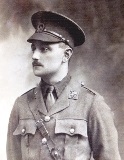
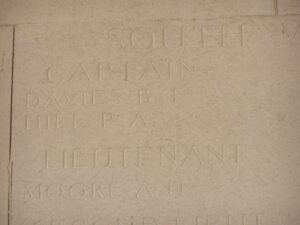
Charles Bernard Davies, Lieutenant, Royal Dublin Fusiliers. Charles was born on 5 June 1894, the son of David E. And Martha Davies, of The Bear Hotel, Cowbridge, Glamorgan. After his father’s death, Charles’s mother re-married, becoming Mrs Lloyd of Lynsholme, Caerphilly, Glamorgan. Charles commenced his education at Cowbridge Grammar School, and was educated at Llandovery between 1908 and 1913. He is remembered at Llandovery as being an All-round sportsman, playing both hockey and cricket for the School from 1910 to 1913. On leaving Llandovery, Charles played cricket for St Fagan’s, Cardiff and even played one game for Glamorgan which at that time was a Minor Counties side. He also played rugby for both Swansea R.F.C. and Cardiff R.F.C., where it was recorded that he was a useful three-quarter. His last season for Cardiff R.F.C. was the 1913/14 season. (Charles’s elder brother, Elvan Davies of Aberavon, played rugby for Wales.) It was also unofficially announced in 1914 that Charles had taken all B.N.C. Sprinting Records. Charles had entered Cambridge University in 1913, where he continued playing rugby. It was said that had he not volunteered for the Army in 1914, he was tipped to win a Blue. He joined the Royal Dublin Fusiliers in 1914 and was commissioned on 26 August 1915 into the 3rd Battalion, which was the Reserve Battalion. Charles was then attached to the 1st Battalion of the Regiment, which was in France preparing for the Battle of the Somme. On the night of 8 June 1916, Charles led a bombing party when it came under heavy enemy fire. The only survivor was a Private Dunne, who was himself to die from his wounds two days later. Search parties were sent out to look for Charles and his men, and it was learned that Charles had been taken prisoner after a fierce hand to hand battle with the Germans. He died in captivity on 9 June 1916, aged just 22. Charles was initially buried by the Germans in Miraumont German Cemetery, but his grave was later destroyed by shellfire. Subsequently, he was commemorated on the German Cemetery Memorial at Queen’s Cemetery, Bucquoy, France.
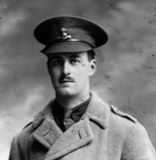
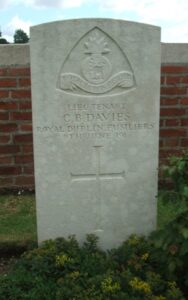
Edwin George Ernest Davies, Able Seaman, Z/1516, Royal Naval Division. Edwin was born on 5 March 1886, the son of James and Evangeline Davies, of The Avenue, Merthyr Tydfil. Edwin commenced his education at Merthyr County School before being educated at Llandovery from 1901 to 1904. On leaving Llandovery, Edwin entered University College Cardiff to study Medicine. However, ill health forced him to abandon his medical studies, and he then entered St. David’s College, Lampeter, where he attained a B.A. degree in History. Later, in 1913, he entered Keble College, Oxford, where he was awarded a B.A. degree in Theology. He later became a curate at Southwark, London. While at Oxford, Edwin boxed at featherweight and was said to be one of the best at his weight at Keble College. He was later instrumental in establishing a flourishing Boxing Club in the East End of London. In 1914, Edwin was ordained curate at Builth Wells, and later that year he enlisted, joining the Royal Naval Division. He was posted to ‘D’ Company, Hawke Battalion, Royal Naval Division, which had been formed from the Public Schools Battalion, R.N.V.R. In the May of 1915, Edwin’s Battalion sailed for Gallipoli, arriving at Cape Helles on 27 May 1915, where they fought as Infantry on the Peninsula throughout the remainder of the year. Because of the evacuation at Anzac, the Turks were able to release the bulk of their artillery to shell the Allied troops at Helles. Edwin was one of between 60 and 70 of his Battalion to be killed and wounded during the ensuing Turkish bombardments on 27 December 1915. He was 29 years old, and as he has no known grave, is commemorated on the Helles Memorial, Gallipoli.
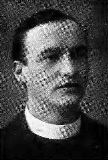
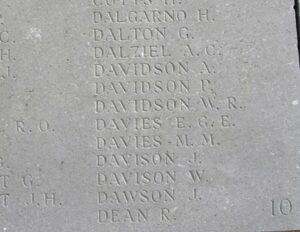
Ernest Frank Davies, Second Lieutenant, Duke of Cornwall’s Light Infantry. Ernest was the third son of John and Margaret Davies, of Glen View, Clytha Park, Newport. Educated at Llandovery from 1901 to 1905, Ernest was Commissioned into the D.C.L.I. on 21 August 1915, and posted to the 9th (Reserve) Battalion in the U.K. In July 1916 Ernest was posted to his Regiment’s 7th Battalion in Flanders, which had been in action in the Ypres Salient and had suffered many Casualties. The Battalion was attached to 61 Brigade, 20th (Light) Division. On 21 August 1916, Ernest’s Battalion moved from Belgium to the Somme, taking up a position around Guillemont. On 24 August 1916, a party of 30 Officers visited the front line area, attracting the unwelcome attention of the German artillery, which bombarded the trenches with heavy shell-fire, killing Ernest and another officer of his Battalion. Ernest was 28 years old, and is buried at Bernafay Wood British Cemetery, Montauban, France.
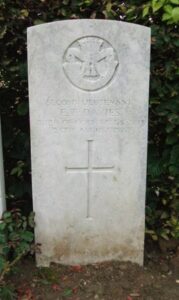
Ernest Wilberforce Davies, Private, 49278, Royal Army Medical Corps. Ernest was born on 12 January 1894, the son of Thomas Rhys Davies and Margaret Davies, of Compton House, Vaughan Street, Llanelli. Educated at Llandovery from 1909 to 1912, Ernest entered St. David’s College, Lampeter, where he was studying at the time when he volunteered for military service, enlisting into the Royal Army Medical Corps at Llanelli. Ernest sailed for the Mediterranean on 13 June 1915, and landed at Anzac Cove, Gallipoli, in early August, in preparation for the attack on Sari Bair. His Field Ambulance Unit established a Dressing Station at the crossroads near Aghyl Dere in readiness for the expected casualties. Ernest was wounded in the attack, and died of wounds on 13 August 1915, aged 23. He is commemorated on a Special Memorial at the 7th Field Ambulance Cemetery, Gallipoli.
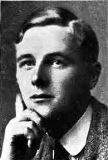
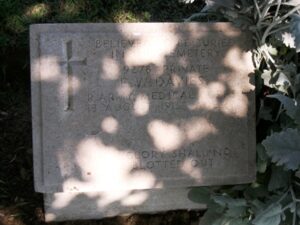
Ralph Llewellyn John Davies, Second Lieutenant, Royal Air Force. Ralph was the son of Llewellyn and Winifred Davies of The Firs, Rhayader. Educated at Llandovery College from 1911 to 1917, Ralph joined the Royal Air Force, and was posted to 89 Squadron, which was a Training Squadron, based at RAF Netherchurch, Wiltshire. Ralph was killed in a training accident on 5 May 1918, at Netherchurch, when he crashed whilst flying Sopwith Camel D9544 whilst target training. He was just 18 years old, and is buried in the churchyard of St. Winifred’s Church, Llansantffraid, Cwmdauddwr, Powys.
Thomas David Davies, Private, 2622, Royal Fusiliers. Thomas was the son of Henry Ballard Davies and Frances Ann Davies, of 12, Commercial Street, Nantymoel, Glamorgan. Educated at Llandovery from 1907 to 1914, and later at Keble College Oxford, in 1914 Thomas relinquished his studies at Oxford to volunteer for the Army, enlisting at Cardiff in November, 1915 into the 21st Battalion, Royal Fusiliers. In early 1916 Thomas was wounded and invalided home, but in the Summer of 1916, he returned to France, joining the 20th Battalion, Royal Fusiliers on the Somme. The Battalion was attached to 19 Brigade, 33rd Division. In July 1916, the 20th Battalion was almost wiped out in the Battle of High Wood. It was in this battle that Thomas Davies was killed on 23 July 1916, aged 21. He has no known grave, and so is commemorated on the Thiepval Memorial, France.
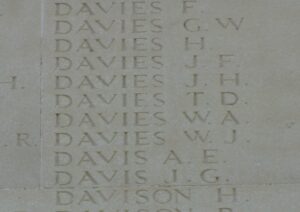
Thomas John Carlyle Davies, Second Lieutenant, Welsh Regiment. Thomas was the son of John Benjamin and Agnes Esther Davies, formerly of the London and Provincial Bank, of Main Street, Pembroke. Educated at Llandovery from 1911 to 1914, Thomas was the College Captain of rugby and a school cricketer. On leaving Llandovery, Thomas entered Clare College, Cambridge, but left prematurely on the declaration of War, to enlist, attending Officer Cadet Training at R.M.A. Sandhurst. Thomas was then commissioned into the Welsh Regiment, and in 1915 he was posted to the 1st Battalion, Welsh Regiment, which was in France attached to 84 Brigade, 28th Division. During September 1915, the battalion took part in preparatory attacks along the Hohenzollern Redoubt, prior to a General Offensive to be launched between Hulloch and Hill 70 on 1 October 1915, during the Battle of Loos. An attack by 1st Welsh was thwarted when it ran out of bombs and became cut off. Thomas was severely wounded in this action and died from his wounds on 2 October 1915, aged just 20. He has no known grave, and is commemorated on the Loos Memorial, France. The photograph of John is courtesy of Dr Frances Hurd.
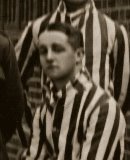
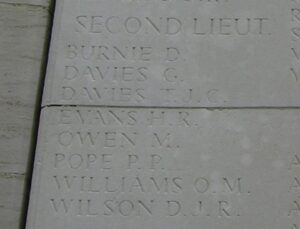
William Davies, Captain, South Wales Borderers. William was the son of David William Davies and Margaret Davies, of Cwmneol House, Cwmaman, Aberdare. He was the husband of Mercy Mary Davies, 244 Newport Road, Cardiff. Educated at Llandovery from 1902 to 1906, he was notable at rugby and cricket. On leaving Llandovery, William studied at University College, Cardiff, and St. Bartholomew’s hospital, London, where he was at the outbreak of the war in 1914. In August 1914, William volunteered for service in the University and Public Schools Battalion of the Royal Fusiliers, and in 1915 he was commissioned into the 2nd Battalion, South Wales Borderers, which was attached to 87 Brigade, 29th Division. The Division moved to Gallipoli via Egypt, landing on 25 April 1915. They remained here until evacuation to Egypt on 11 January 1916, and then moved to the Western Front on 15 March 1916. The Division took part in its first major action in France during the 1916 Somme Offensive, and fought at the Battles of Albert and Le Transloy, suffering heavy casualties. In the Spring of 1917 they fought at the Battle of the Scarpe, which was part of the Arras Offensive, and then moved further north to Ypres. Here they fought at the Battle of Langemarck, and then at the Battles of the Menin Road, Polygon Wood, Broodseinde and Poelcapelle, before moving to Cambrai. Here they fought at the Battle of Cambrai in November and December 1917 before moving back to Flanders early in 1918. The German Spring Offensive hit the British on the Somme on 21 March 1918, and hit in Flanders just weeks later, on 9 April 1918. William was a Captain by now. On 11 April 1918, during the Battle of Lys, a German attack from Estaires to Givenchy inflicted heavy casualties on the 2nd SWB. William Davies was one of three officers of the battalion to survive this action, and consequently became the Senior Officer, commanding the remaining men of the Battalion, but was killed in action during a further attack on the Battalion’s position on 11 April 1918. He was 29 years old, and is commemorated on the Ploegsteert Memorial, Belgium.
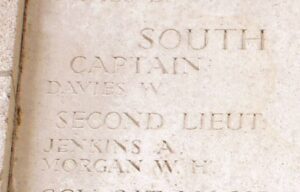
Noel Everard Evans, Second Lieutenant, Royal Field Artillery. Noel was born in Oswestry in 1899, the son of the Rev. Enoch James Evans and Violet Everard Evans. His father had been Vicar of Llandrillo yn Rhos, in the diocese of St. Asaph, prior to retiring to Whinside, Hindhead, Surrey. Noel was also the grandson of Morgan Evans, late Prebendary of St David’s Cathedral, and the late Colonel Everard, who was one of the survivors of the Charge at Balaclava in the Crimean War. Noel commenced his education at Rhos Preparatory School before entering Llandovery College in 1913. He remained there until 1917, and while at Llandovery, Noel made a name for himself as an excellent sportsman. He played at wing three-quarter for the First XV, and scored seven tries against Christ College, Brecon in The Annual encounter in 1916. He was Described in the School Journal as “having plenty of pace and a good swerve” and that “he was safe with his hands”. It has been said that had Noel survived the Great War, he would have undoubtedly have played International Rugby for Wales. He was also a brilliant athlete. In 1917, he created a School Athletics Record by Winning the Steeplechase, the Mile, the half-Mile, the Quarter-Mile, High Jump and Putting the Weight. And if that was not enough, he came second in the 100 Yards ‘dash’ and Long jump! After leaving Llandovery, Noel entered Jesus College, Oxford. He left Oxford to enlist in the Army and was commissioned into the Royal Field Artillery in the Autumn of 1918, joining the 121st Battery, 27th Brigade, attached to the 5th Division. Noel was sadly wounded in action soon after moving to the Front, on 8 November 1918, during the Battle of the Sambre. He was evacuated to a Military Hospital at Rouen, where he died of wounds on Armistice Day, 11 November 1918, aged just 19. He is buried at St. Sever Cemetery Extension, Rouen, France.


Rhys Trevor Evans, Second Lieutenant, Royal Welsh Fusiliers. Rhys was the son of Tom and Mary Ann Evans of St. Ilid, 54, Suffolk Place, Porthcawl, originally of ‘Dyffryn house’, Cwmtillery, Monmouthshire. Rhys was educated at Llandovery from 1909 to 1910, and was commissioned into the Royal Welsh Fusiliers on 26 September 1916. Rhys was posted to the 4th Battalion (Denbighshire), which was attached to the 47th (2nd London) Division, as Pioneers. The Division were on the Somme in 1916, where they fought at the Battle of Flers-Courcelette, and then at the Battle of Le Transloy, where they captured Eaucourt l’Abbe. They took part in Attacks on the Butte de Warlencourt. Early in 1917 the Division moved north to Belgium, and took part in the Battle of Messines. They were moved to Ypres, and the Pioneers were constructing a tram-line from Hell-Fire Corner to the Menin Road, on 1 September 1917 when they came under enemy shell-fire. Rhys was killed in action during the barrage. He was just 21 years old, and has no known grave, and so is commemorated on the Tyne Cot Memorial, Belgium.
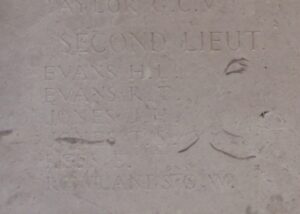
Oswald Henry Feilden, Captain, Leicestershire Regiment. Oswald was the son of Lt.-Col. Robert and Emily Jane Feilden, of Lane End, Hartney, Spilsby, Lincs. He was born in Borth, Cardiganshire and had been educated at Llandovery College from 1898 to 1900, before taking his degree at Aberystwyth. Oswald joined the Leicestershire Territorial’s in 1911, and was commissioned into the 5th Battalion, Leicestershire Regiment on 15 January 1912. The Division had served in Ireland and had been involved in the Easter uprising, before being sent to the Western Front, where they landed in France on 24 February 1917, attached to 177 Brigade, 59th Division. They fought during the German retreat to the Hindenburg Line, and then moved to Ypres. After training around the Vormezeele area in Flanders in early September 1917, Oswald’s Battalion moved to St. Jean, near Ypres, to prepare for a major attack which was timed to take place on 26 September 1917. At 05.50 hours on 26 September 1917, the 2/5th Leicester’s, attacked hill 37, taking all its objectives. Oswald was severely wounded in this action and died from his wounds on 29 September 1917, at No. 46 Casualty Clearing Station, Proven. Oswald is buried at Mendinghem Military Cemetery, Belgium. He was 30 years old.
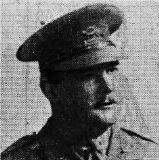
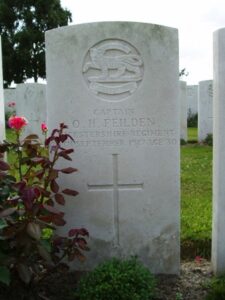
Eric Murray Forster, Second Lieutenant, Essex Regiment. Eric was the son of James Young Forster, J.P., and Annie Louisa Forster, of Ravensworth, Sutton, Surrey. Educated at Llandovery from 1911 to 1912, Eric continued his education at Malvern College, where he was a member of the School O.T.C. After leaving school, Eric entered the Government Agricultural College at Cedars, Natal, and in 1915 he was farming in Rhodesia. In 1916 Eric Forster returned to Britain to enlist, and spent four months in an Officers Training unit, before being commissioned into the 3rd Battalion, Essex Regiment in October 1916. In January 1917, Eric embarked for France, where he joined the 2nd Battalion, Essex Regiment, which was at Arras attached to 12 Brigade, 4th Division. On 3 May 1917 the battalion took part in an attack between Roeux and Gavrelles, which was part of the main Battle of Arras. Sadly Eric was killed in action during the assault that day. He was 21 years old, and is buried at Athies Communal Cemetery Extension, France.
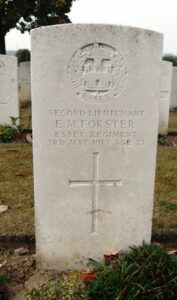
Gilbert Bryan Francis, Private, 2138, New Zealand Expeditionary Force. Gilbert was born in Llandygwydd Vicarage on 17 October 1886, the son of Rev. David Francis, and Amy Francis, Llandygwydd. He was educated at Llandovery College from 1898 to 1904, and emigrated on 4 December 1912, becoming a Farmer and residing at the home of H. Nelson, Konini, Pahiatua, New Zealand. Gilbert enlisted on 15 February 1915, into the 5th (Wellington) Rifles, NZEF, and in June 1915 was posted to the Dardanelles. On 15 August 1915, Gilbert joined the 17th Battalion, (B Company) 5th Wellingtons on Gallipoli as a replacement, after the Battalion’s heavy casualties suffered at Chunuk Bair. On 3 September 1915 Gilbert was struck down with fever and admitted to No.16 Casualty Clearing Station on the Peninsula. From Gallipoli he was transferred to Mudros, and later embarked for Malta on the Hospital Ship ‘Neuralia’. By 4 October 1915 Gilbert’s health had deteriorated and he died of enteric fever at St. George’s Military Hospital on 13 November 1915, aged 29. He is buried at Pieta Military Cemetery, Malta.
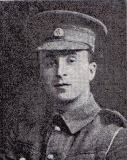
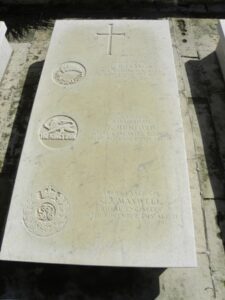
Henry Percy Bright Gough, MC and Bar, Major, Welsh Regiment. Harry was born on 18 January 1880, the son of Frederick George and Sarah Ann Gough, of Llanelli. He married Martha Reid Fullerton prior to the war, and the couple had two children, residing at The Firs, Gowerton, Swansea. Henry was educated at Llandovery between 1894 and 1900. In 1900, Henry was awarded a Science Exhibition at Cambridge, where he was a success academically and at sport. He played hockey for his College, (Sidney Sussex) and rugby for Cambridge Welsh, and graduated with a First Class Honours Degree in 1902 and a First Class Science Tripos in 1903. On leaving Cambridge he continued playing rugby, at half-back both for Llanelli and Vale of Lune, Lancaster. At the outbreak of war, Henry was Science Master at Oakham Grammar School, but left to enlist in the 14th (Swansea) Battalion, Welsh Regiment. In 1915 Henry was commissioned and posted to the 17th Battalion, Welsh Regiment and in 1916 he was promoted to Captain, at the time of the Battalion’s departure for France. The Battalion joined 119 Brigade, 40th (Bantam) Division, and moved to the front near Loos. Late in 1916 they moved south to the Somme, and fought at the Battle of the Ancre, and remained in the area over the winter. In March 1917 the Germans withdrew to their shortened line, called the Hindenburg Line, and the 40th Division was one of the Divisions that followed the withdrawal. On 24 April 1917, there was a mile long advance at Villers Plouich, where a position was consolidated. This was the top of a spur, which the Battalion named Rhondda Hill; but this was later officially re-designated Welsh Ridge. This established the line from which the attack on the Hindenburg Line was to be launched. Henry distinguished himself in a successful action, south of La Vacquerie on 18/ 19 May, when a trench raid resulted in the capture of an enemy machine-gun and two unwounded prisoners, at no loss of life to his own men. For his part in the operation, Henry was awarded the Military Cross. His citation read “For conspicuous gallantry and devotion to duty. He has done splendid work when in charge of parties recovering mines. He was also instrumental in rescuing eight men from a demolished cellar. This work was accomplished under heavy fire, and occupied several hours”. During the autumn of 1917, Henry’s Battalion was in support of 12th SWB and 19th RWF in the attempt to capture the stronghold of Bourlon Wood, during the Battle of Cambrai. His Battalion suffered Heavy casualties, losing 17 officers and 301 other ranks. Henry, who now held the rank of Major, found himself in command of the Battalion, in the absence of Lt. Colonel Anderson, who had been wounded. He was awarded a Bar to his MC for his actions here, however, by this time the 17th Battalion had virtually ceased to exist. The Division was caught up in heavy fighting during the spring of 1918, during the German Offensive on the Lys, and were in positions near Mont De Cats, near Ypres. Henry was sent to command a section of the East Surrey Regiment, which was defending a support trench system running north to south through Strazeelle. Here, on 22 April 1918, Henry was severely wounded, and died at the 62nd London Casualty Clearing Station that day. He was 38 years old, and is buried at Arneke British Cemetery, France.
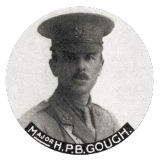
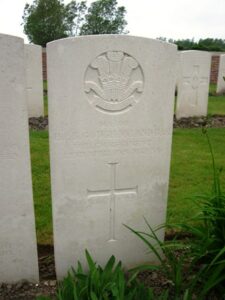
George Owen Green, Captain, Welsh Regiment. George was the son of James George Green and Jane Green of Panteg, Llanbadarn Road, Aberystwyth, and the Grandson of Alderman George Green, Mining Engineer. George’s Brother, Robert Kellet Green was a notable rugby forward, who served in the Royal Field Artillery during the war. Educated at Llandovery College from 1889 to 1895, he had married Elizabeth Ann Bevan and they went to British Columbia, where George worked as an Engineer in the gold mines. He also went to Canada to inspect mining property. George also held Mining appointments as far afield as Russia and South America. They returned to Aberystwyth, where George was prominent in many local societies, including the golf club and St. David’s Lodge of Freemasons. Sadly Mrs Green died in childbirth soon after arriving back home. At the end of 1914, George applied for a commission in the Army, and was duly commissioned into the 9th Battalion, Welsh Regiment, which was attached to 58 Brigade, 19th (Western) Division, and landed at Havre in July 1915. George was in charge of a working party near Laventie, when he was killed by a German Sniper on 23 August 1915, and is buried at Rue-Du-Bacquerot No. 1 Military Cemetery, Laventie, France. He was 36 years old.

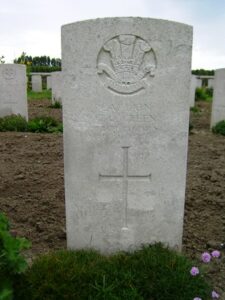
William Key Griffith, Second Lieutenant, London Regiment. William was born on 28 December 1892, the son of William Jones Griffiths and Louisa Sophia Griffiths, of Glanfrwdwyllt, Port Talbot. Educated at Llandovery during 1909, after leaving School, William went to Buenos Aires in a commercial capacity, from where he returned in 1915. William volunteered and underwent training in the Inns of Court Training Corps before being commissioned into the 2/12th London Regiment (The Rangers), which was attached to 168 Brigade, 56th (London) Division. William served for a while in France, but was invalided home suffering from trench fever. On recovery, he returned to the front, but was sadly killed in action during the Battle of Polygon Wood on 26 September 1917, aged 24. He has no known grave, and so is commemorated on the Tyne Cot Memorial, Belgium.
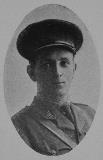
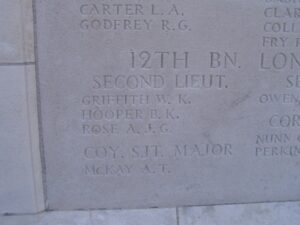
Nicholas Griffiths, Second Lieutenant, South Wales Borderers. Nicholas was the fourth son of David and Sarah Griffiths, of 9, Windsor Road, Barry, formerly of Penybryn, Bailey Street, Brynmawr, Breconshire. Nicholas was one of seven brothers who served in the Great War, and was educated at Llandovery from 1905 to 1911. On leaving Llandovery, Nicholas entered University College, Cardiff, where he Captained the College XV and was described as a capable student and an ardent athlete. At the outbreak of War in 1914, Nicholas was a Theological student at St Michael’s Theological College, Cardiff. In May 1915, he enlisted in the University and Public Schools Battalion, Royal Fusiliers, and was commissioned into the South Wales Borderers. On 3 September 1915 Nicholas embarked for France with the 7th Battalion, which was attached to 67 Brigade, 22nd Division. The Division took part in the Battle of Loos, and less than 3 weeks after moving to the Front, Nicholas was gassed, and invalided home. In February 1916, he returned to the front, and joined the 6th Battalion, South Wales Borderers, at Neuville St Vaast, and in May 1916, he was appointed Adjutant of the Battalion. In June 1916, the Battalion was ordered to Aveluy Wood, to prepare the ground for the July Offensive on the Somme. On 11 July 1916, Nicholas and eleven of his men were digging assembly trenches near Ovillers, when they were killed after coming under heavy enemy shell-fire. Nicholas was 25 years old, and is buried at Bapaume Post Military Cemetery, Albert, France.
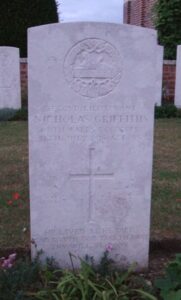
David George Harries, Private, 203, Canadian Infantry. David was born on 10 August 1880, the son of Rees and Ann Harries, of Bolgoed, Pontardulais. Educated at Llandovery from 1895 to 1901, David played cricket for the School 1st Xl, and rugby for the 2nd XV, at centre. After leaving School David emigrated to Canada where he became a farmer, and served in the Queen’s Royal Scots. On 14 December 1914 he enlisted in the Saskatchewan Light Horse at Winnipeg, but died of disease there on 17 January 1915, aged 34. David is buried in the Winnipeg (Brookside Cemetery) Manitoba, Canada.
John Francis Howells, Surgeon Lieutenant, Royal Navy. John was born on 21 April 1893, the son of Dr. John and Elizabeth Janet Howells, of 18, Northampton Place, Swansea, formerly of Pleasant View, Trimsaran. Educated at Llandovery from 1906 until 1911, and afterwards at University College Cardiff, in 1917, John obtained M.R.C.S. and L.R.C.P. (London). John joined the Royal Navy as a Temporary Surgeon in 1917, serving in the North Sea on H.M. Sloop Crocus, and also serving in the Mediterranean. He also served at the Royal Naval Hospital, Chatham before being attached to the 19th Field Ambulance, which was in France with the 33rd Division. John married Dora Gwendoline Miles, of The Pines, Penylan, Cardiff at St. Isan’s Church, Llanishen, Cardiff in August 1918, before returning to France. John sadly died of pneumonia in France on 6 November 1918, aged 26, and is buried at Awoingt British Cemetery, France.
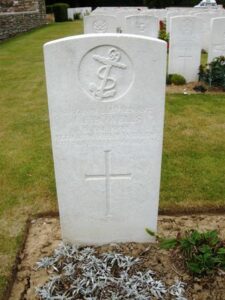
Hubert Darrell Hughes, Second Lieutenant, Royal Welsh Fusiliers. Hugh was the youngest son of Reverend Llewellyn Robert Hughes, and Maria Elizabeth Hughes, of Llandudno. His father was Chaplain to the Forces at Conway Camp. Educated at Llandovery College from 1911-1914, Hubert was Sub-Editor of the School Journal in 1914. Hugh had been a soloist in the Choir of Holy Trinity Church, Llandudno. At the outbreak of war, Hugh enlisted in the Army, and entered R.M.A. Sandhurst, where he passed out with Distinction. He was commissioned on 14 July 1915 when only 17 years of age, and was gazetted into the 3rd Battalion, Royal Welsh Fusiliers. Hugh was posted to the 8th Battalion, Royal Welsh Fusiliers, which was attached to 40 Brigade, 13th Division, and they landed at Anzac Beach on 4 August 1915. They were evacuated in January 1916 to Egypt, and then fought in Mesopotamia. It was during the Battle of Kut, on 14 January 1917, that Hugh was killed in action when an attempt was being made to clear the Khudeira Bend. He was 19 years old, and has no known grave, and so is commemorated on the Basra Memorial, Iraq.
Frank Ungoed Humphreys, Lance Corporal, 313097, Gordon Highlanders. Frank was born in Berwick, Llwynhendy, the son of John Rees and Casellah Humphreys, of Llwyn Hall, Llwynhendy, Llanelli. Frank was educated at Llandovery from 1913 to 1914, and his brothers, William Leslie Humphreys and Trefor Ungoed Humphreys were also pupils at the School. Frank enlisted at London into the 7th Battalion, Gordon Highlanders, which was attached to 153 Brigade, 51st (Highland) Division. The Division was in France by early May 1915, and was hurried to the defence of Ypres. The enemy had attacked on 22 April 1915, using poison gas for the first time. All available reserves were deployed to stop the Germans taking advantage of the initial surprise. The Division remained in action until moved to the area of Estaires on the River Lys, on 19 May. They then fought at the Battle of Festubert, and took part in an unsuccessful attack near Givenchy on 15 June 1915, and shortly afterwards moved south to the area north of the River Somme. They relieved a French Division near Hamel, and took part in the Battle of the Somme. They captured the enemy strong hold of Beaumont-Hamel on 13 November 1916, taking more than 2,000 prisoners. During December and January 1917 the Division remained on the Somme, and saw their next major action in the Battle of Arras. They re-entered the line on 15 April 1917, and eight days later took part in an attack near Roeux, which they captured before moving north to Ypres. Here they took part in the opening assault of the Third Battle of Ypres, on 31 July 1917, at the Battle of Pilckem. They then took part in the Battle of the Menin Road before being moved south, where they took part in the Battle of Cambrai. The Division remained in the area until 21 March 1918 when the enemy launched its atttack on the Somme, and saw heavy fighting before being relieved, and moved to Bethune to rest. Unfortunately, the enemy opened a second phase of his offensive, the Battle of the Lys, on 9 April 1918, and the Highland Division played a key part in beating off incessant attacks. At the beginning of May, the Division moved to Oppy near Arras, where it stayed until 11 July in a relatively quiet spell, however, when a third huge enemy attack opened in the area held by the thinly-stretched French Army south west of Rheims, the Division were sent south to assist. They saw several days of very heavy fighting, which is now officially known as The Battle of the Tardenois. Fighting took place in the valley of the Ardre, at Marfaux and Mont de Bligny. Frank was killed in action on 30 July 1918, during the re-taking of the village of Marfaux, about 11 miles from Rheims. He was 19 years old, and is buried at Marfaux British Cemetery, France.

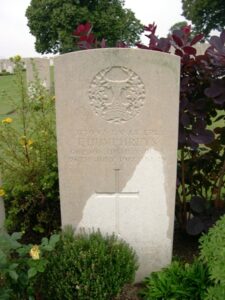
John Evan Alan Humphreys, Second Lieutenant, Royal Field Artillery. John was the son of Lt.-Col. Charles Evan and Jane Humphreys, of Mounteinion, Llanfair, Montgomeryshire. John’s father was Divisional Sanitary Officer of the Welsh Division, and County Medical Officer for Montgomeryshire. John was educated at Llandovery College from 1912-1916, and is quoted in the 1915 School Journal as being a Prefect, and playing at forward for the School XV. He enlisted at Llandovery in 1916 as a Gunner in the Royal Artillery, and was commissioned into the Royal Field Artillery, serving with the ‘C’ Battery (Cardiganshire), 64th Army Field Artillery. John went to the front in June 1916 and the following year he was at Ypres when the Battle of Third Ypres was launched. John was killed in action on 31 August 1917, aged just 19 and is buried at Brandhoek New Military Cemetery No. 3. His Commanding Officer wrote to his father; “He was a brave, capable and cool-headed lad. His coolness and courage on several trying occasions had given us proof that he would become a most valuable officer. Although he was not with us long, I saw enough of him to realise what a loss we had sustained.”
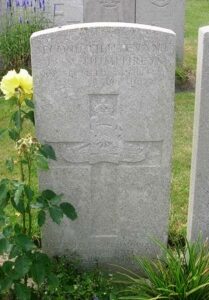
David Jones Capenhurst Jenkins, Sergeant, 12863, Canadian Infantry. David was the fourth son of the Reverend John Jenkins, and Florence Jenkins, of Wellfield, Llantwit Vardre, Pontypridd. David was educated at Llandovery from 1904 to 1911, where he played rugby at outside-half. After leaving Llandovery, David entered Downing College, Cambridge, where he played rugby for Downing College, and also London Welsh. Upon leaving Cambridge, David became a farmer in Canada. In 1914 David enlisted in the Army at Regina, Saskatchewan, Canada. He became a Trooper in the 16th Light Horse before transferring to ‘B’ Company 5th. Infantry Battalion, Saskatchewan Regiment on 3 September 1914. In early 1915, David embarked for France with the 1st Canadian Contingent, and the 5th Battalion became part of 2nd Canadian Brigade, 1st Canadian Division. The Canadian Corps took over the area from St. Eloi to the north of Hooge in early April 1916, and they were in action there until 19 April. Here there were constant attacks by both sides in an area cratered by mines and deep in mud. It was during this period, on 9 April 1916, that David was killed in action. He was 22 years old, and is buried at Railway Dugouts Burial Ground, Zillebeke, Belgium. Prior to his death, David had served for 15 months as a despatch runner, and was described by one of his officers; “he was the most fearless, painstaking and cool man I have ever had under my command”. Two of David’s brothers, L/Cpl Morgan Jones Jenkins, Princess Patricia’s Canadian Light Infantry, and 2nd. Lt. Richard Jenkins, Manchester Regiment, were also killed in the Great War.

Ernest Stanley Jenkins, Second Lieutenant, Welsh Regiment. Ernest was the eldest son of Evan Jenkins, Bookseller and Newsagent, and Agnes Jenkins, of Brynawel, Mountain Ash. Ernest was educated at Llandovery from 1908 until 1910. After leaving Llandovery, Ernest entered Oxford University, where he continued his studies after graduation, with the intention of entering the Church, but in 1915 Ernest enlisted in the Army and was commissioned in 1916 into the Welsh Regiment. In April 1917, Ernest left for France, joining the 18th Battalion, Welsh Regiment, on 3 May 1917. The Battalion was attached to 119 Brigade, 40th (Bantam) Division. However, he was soon hospitalized with trench fever. On recovery, he returned to the line, joining his battalion in the fighting for Bourlon Wood during November 1917, during the Battle of Cambrai. On the night of 22/23 November 1917, 40th Division relieved the 62nd Division at Bourlon Wood, and B, C, and D Companies of 18th Welsh, were ordered to clear the northern portion of the Wood, while A Company was allocated carrying duties. There was fierce attack and counter-attack as the line was won, lost and then re-established; and on the night of 23 November there was heavy enemy shelling causing a number of casualties. At 09.00 hours on 24 November 1917 the Germans advanced against the British positions, and in the ensuing fighting the 18th Welsh lost 6 Officers killed, one of whom was Ernest. He was 28 years old, and is buried at Anneux British Cemetery, France.
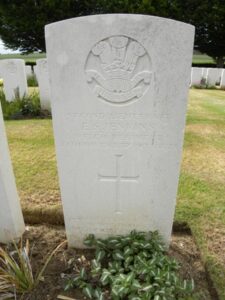
John Ernest Jenkins, Captain, South Wales Borderers. John was born on 14 February 1878, the second son of Councillor John Jenkins and Elizabeth Jenkins, of the Brickworks, Merthyr Tydfil. John was married to Margaret Jenkins (Nee Hek). The couple had two children (one child sadly pre-deceased him in 1917) and lived at 29, Lancaster Villas, Merthyr Tydfil. John was educated at Llandovery in 1891, and on leaving Llandovery, John entered his family’s Merthyr Brick and Tile manufacturing business. He was well known in local business and sporting circles, and rode with and The Gelligaer Hunt. John’s military career began with the South Glamorgan Yeomanry, in which he reached the rank of Sergeant Major prior to the outbreak of War in 1914, and he took part in a number of local military tournaments. When War was declared, John recruited 250 local men into a Local Defence Force, and volunteered for Overseas Service. His Company was attached to the Welsh Regiment at Port Talbot for 12 months, on Garrison Duty. John was gazetted Captain and Posted to Rhyl for training, before leaving for France with the 12th Battalion, South Wales Borderers in June 1916 as part of the 40th (Bantam) Division. The Division took over positions in the line near Loos, where they remained until moving to the Somme later that year, where they fought at the Battle of the Ancre. They spent their first winter in the trenches of 1916/17 on the Somme, and followed the German withdrawal to the Hindenburg Line in March 1917. On 20 April 1917 the Battalion was at Gouzeaucourt, and remained in the Line around La Vacquerie and Gonnelieu for six months, until they were relieved on 11 October. In November 1917, the Battalion was sent to Bourlon Wood to take part in the Battle of Cambrai where the 40th Division were to hold a line from the Village of Anneux to a point in front of the Sugar Factory. During the two days from 23 to 25 November, the 40th Division lost 172 officers and more than 4,000 men. On 25 November 1917, John was wounded in the chest during the British advance which was crossing the main German line in a sunken road running from east to west. John died from his wounds at a Casualty Clearing Station that same day. He was 40 years old, and is buried at Rocquigny-Equancourt Road British Cemetery, Manancourt, France. John is on the right of the photograph below, wearing a black armband in memory of his child who had just passed away. The other two men are his brothers, Thomas P. Jenkins (left), and Gwilym V. Jenkins (rear), courtesy of Nicholas C. Jenkins, Great Grandson of Thomas.
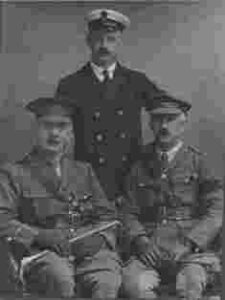
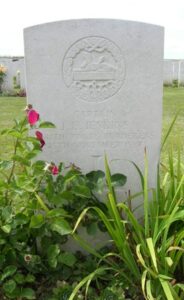
Goulborne Hayward Jennings, Second Lieutenant, Royal Welsh Fusiliers. Goulborne was the son of the Rev. Richard Jennings, of Gyffylliog Rectory, Ruthin, Denbighshire, and Louise Trevitt Jennings. He was educated at Llandovery between 1908 and 1914, where he was a Prefect, and played rugby for The School XV. Goulbourne was commissioned into the 20th Battalion, Royal Welsh Fusiliers on 25 September 1915, and on 5 July 1916 joined the 10th Battalion, Royal Welsh Fusiliers at Franvillers, on the Somme. The Battalion was attached to 76 Brigade, 3rd Division, and marched to Carnoy on 13 July, to take part in the attack on Bazentin Ridge on the Somme. He was wounded during the attacks on Lonely Trench and Talus-Bois Trenches during the period of 17/19 July 1916 and was subsequently killed in Action on 15 August 1916, at Carnoy. Goulborne was 19 years old, and as he has no known grave, he is commemorated on the Thiepval Memorial, France.
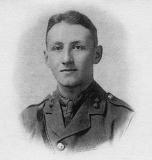
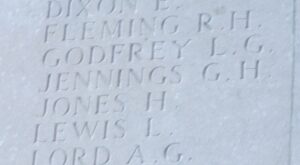
Glynne Thomas Jones, Cadet, Royal Flying Corps. Glynne was the son of John Thomas Jones and Edith Jones, of 52, Greenfield Terrace, Abercynon. Glynne was educated at Llandovery between 1913 and 1917, and played rugby for the School XV for two Seasons, being described as a young forward who should make a good hooker. He also won 1st Prize in the School High Jump. After leaving Llandovery, Glynne worked on the Staff of Dr. Walford, the Medical Officer for Cardiff, until he was old enough to join the Royal Flying Corps. Glynne had just finished his training as a Cadet when he collapsed, and after a double operation for appendicitis, he died at St. John’s Military hospital, Hastings, on 19 March 1918. He was 18 years old, and is buried at St Gwynno’s Churchyard, Llanwonno, Glamorgan.
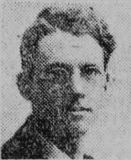
James Arthur Jones, Captain, South Wales Borderers. James was the son of the Rev. James Jones (late Vicar of Llandebie) and of Jane Jones, of Hill Cottage, Heywood Lane, Tenby. James was educated at Llandovery from 1903 to 1907, and was an Engineer by profession. In 1915 James was commissioned into the South Wales Borderers, and posted to the 10th Battalion, which was attached to 115 Brigade, 38th (Welsh) Division. In the summer of 1915 the Battalion moved with the remainder of the Welsh Division to Morn Hill Camp, Winchester, where it completed its training and equipping, and embarked for France from Folkestone on 5 December, disembarking at Boulogne the same day. During the winter and spring of 1916 the Battalion held the line in French Flanders, and then moved south to the Somme, where they fought at Mametz Wood. After a year in reserve, they fought at Pilckem Ridge and Langemarck in Third Ypres, and James was Mentioned in Dispatches for his bravery and good work here. The Division was back on the Somme in 1918 facing the German Offensive. By October 1918, James had been appointed Temporary Captain, serving with D Company, 10th SWB, which was participating in the final push against the German Army. After crossing the flooded meadows of the Ancre, to a position above Thiepval and moving cast across the old Somme Battlefield, the Battalion was positioned near Gouzeaucourt. On 8 October 1918, the Battalion was attacking south of Villers Outreaux near Le Cateau, in an attempt to take Villers Farm and join up with the 17th Battalion, Royal Welsh Fusiliers. Although they were successful in reaching their objective, James, who was leading his Company, was killed when it came under heavy machine-gun fire. He was 28 years old, and is buried at Guizancourt Farm Cemetery, Gouy, France.
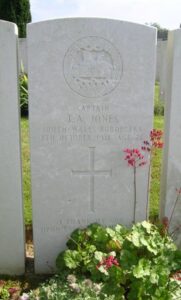
John Ivor Jones, Private, 14142, Welsh Regiment. John was the son of David and Annie Jones, of St. Carlos, Richmond Road, Cardiff. Educated at Cardiff High School and Monkton House School, Cardiff, John was at Llandovery from 1900 to 1901. Ivor, as he is better known, enlisted at Cardiff into the 11th Battalion, Welsh Regiment. The Battalion was known as the Cardiff Pals, and was attached to 67 Brigade, 22nd Division. The Division crossed to France in early September 1915, with all units being concentrated near Flesselles by the 9th of the month. However it’s stay in France was to be very short, as on 27 October 1915 the Division, having been moved by train to Marseilles, began to embark for Salonika. It completed concentration there in November, and they took over the front line, south west of Lake Doiran from the French. The Cardiff Pals remained in this area, overlooked by strongly fortified hills, until they participated in their first action during September 1916. This involved mounting raids against enemy positions on the Piton Des Mitrailleuses and Dorsale hills. On 13/14 September 1916, the Cardiff Pals were heavily counterattacked, and it was during this fighting, on 14 September 1916, that Ivor was killed while attempting to bring in wounded men from the previous day’s fighting. He was 30 years old, and is buried at Karasouli Military Cemetery, Salonika. His three brothers also attended Llandovery College, and one of them, Stanley Ewart Jones was taken prisoner in 1917 and spent the rest of the war in a prisoner of war camp in Germany.
John Sydney A. Jones, Second Lieutenant, Royal Field Artillery. John was the son of Mr. Harvey Jones of Bristol, and the Husband of Lillian Mary Jones, of 5, Dryden Chambers, 119 Oxford Street, London. John was educated at Llandovery in 1902, and after leaving Llandovery, John was employed by W.D. & H.O. Wills, the Tobacconists, of Bristol. He was organist at The Holy Nativity Church, Knowle, Bristol and also deputy organist at Bath Abbey. John had been commissioned into the Royal Field Artillery, and was posted to 189 Brigade, 41st Division. The Division was at Ypres during the summer of 1917, preparing to take part in the coming Battle of Passchendaele, when John took ill. He sadly died of pneumonia at No. 37 Casualty Clearing Station, Godewaerswelde, Belgium, on 27 August 1917. John was 32 years old, and is buried at Godewaersvelde Cemetery, Belgium.
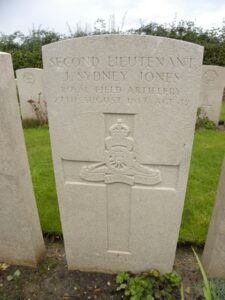
Llewellyn Price Jones, Second Lieutenant, Welsh Regiment. Llewellyn was the second son of William Price Jones and Gertrude Jones, of The Parade, Barry. He was educated at Llandovery from 1908 until 1910. Llewellyn enlisted into the Army in October 1916, and was commissioned on 26 April 1917, into the 3rd Battalion, Welsh Regiment. Llewellyn was then posted to the 9th Battalion, Welsh Regiment, which was attached to 58 Brigade, 19th (Western) Division. By September 1917, Llewellyn was at the Front. The Division was at Ypres, and Llewellyn took part in an attack from the Ypres- Comines Canal to the railway north of Langemarck. The Conditions were atrocious with heavy clinging mud preventing the troops from keeping apace with the artillery barrage which had been deliberately accelerated, to keep them clear of any enemy counter-barrage. However, thus exposed, the attack came under heavy enemy machine-gun fire which resulted in heavy Casualties. Llewellyn was killed in action here, at the Battle of the Menin Road, on 20 September 1917. He was 24 years old, and has no known grave, and so is commemorated on the Tyne Cot Memorial, Belgium.
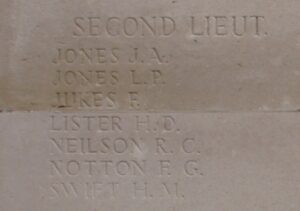
Stanley Ewart Jones, Major, East Yorkshire Regiment. Stanley was born on 8 March 1881, the son of the David and Annie Jones of 21 Richmond Road, Cardiff. He was educated at Llandovery during 1894. Stanley enlisted in the East Yorkshire Regiment, and was commissioned 2nd Lieutenant, and posted to the 10th Battalion during 1915. The 10th Battalion East York’s were termed the ‘Hull Commercials’, as the majority of its members were working in commerce in clerical and management positions. It was raised by Lord Nunburnholme, Lord Lieutenant of the East Riding of Yorkshire, and over half of its original members received commissions after training. After a period on Salisbury Plain, the Battalion was attached to 92 Brigade, 31st Division, and posted to Port Said on 15 December 1915, to man the Suez Canal Defences. March 1916 saw the Battalion in France, taking over the trenches at Auchonvillers on the Somme. After taking part in the attack on Serre on the first day of the Battle of the Somme, on 1 July 1916, the Battalion held the trenches for a week; remaining around the Somme area for the remainder of the year and the early months of 1917, when they moved to Arras. Orders were received for the Battalion to take the Berg Goben Trench. The Attack sent in without artillery support, and came under heavy enemy machine-gun fire, not only from the Objective but from Rossignol Wood as well. Stanley was now a Captain, and was badly wounded in this action. He was reported killed on 6 March 1917. Stanley had been in fact taken prisoner on 27 February 1917, and as a prisoner was sent to Switzerland on 24 March 1918. He was repatriated to Britain on 27 December 1918. Stanley’s name is among the Old Llandoverians listed in the School Roll of Honour which appeared in the School Journal Mid 1919 Edition, and hence his name is inserted on the School Great War Plaque in the College Chapel. His brother John Ivor Jones was killed in action at Salonika on 14 September 1916, while serving with the 11th Welsh (Cardiff Pals).
Wilfred David Powell Jones, Private, SPTS/1688, Royal Fusiliers. Wilfred was the son of John and Emma Sarah Jones, of Llandovery. He was educated at Llandovery from 1896 to 1904, where he played cricket for the School Xl in 1903, and was described as a fair slow bowler and hard hitting bat. The family then moved to 18, Woodstock Road, Oxford. Wilfred enlisted at Hornchurch into the 23rd Battalion, Royal Fusiliers. The Battalion was the first of the two Sportsmens Battalions which was instituted by Mrs E. Cunliffe-Owen, and was raised for the upper and middle classes only. Mrs Cunliffe-Owen also specified that the men should be less than 45 years of age, physically fit and able to shoot and ride. The Battalion landed at Boulogne on 17 November 1915, and joined 99 Brigade, 2nd Division. The Division was still at Loos, and by July 1916 had moved to the Somme. On 27 July 1916, Wilfred’s Battalion was engaged in the fighting at Delville Wood, followed by action at Hebuterne in August. The Battalion remained in this area of the front throughout the autumn of 1916. In November 1916, Wilfred took part in the Battle of the Ancre and was severely wounded near Bertrancourt. He died from his wounds at a Casualty Clearing Station at Puchevillers, France, on 8 November 1916. Wilfred was 31 years old, and buried at Puchevillers British Cemetery, France.
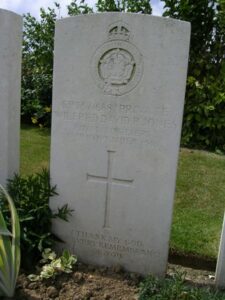
Ivor Norman Jones-Parry, Lieutenant, Royal Garrison Artillery. Ivor was the son of Thomas and Selina Alfreda Jones-Parry, of 5, Hillcrest Rd., Acton, London, formerly of Bank House, Amlwch, Anglesey, and the National Provincial Bank, Haverfordwest, Pembrokeshire. Ivor was educated at Llandovery from 1906 until 1909, and at the outbreak of war he was a Second Lieutenant in No. 2 Company, Pembrokeshire Territorial’s. He was commissioned into the Royal Garrison Artillery on 12 August 1915, and moved to France late in 1916, serving with the 171st Siege Battery. Ivor was killed in action during the Battle of Arras, on 12 May 1917. He was 24 years old, and is buried at Mory Abbey Military Cemetery, France.
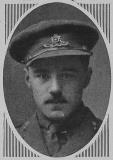

Charles William Wykeham King, Company Sergeant Major, 760032, London Regiment (Artists Rifles). Charles was born in Wykeham, Fareham, London, the son of Edmund King. Charles had been educated at Llandovery from 1895 to 1901, and was then resident at the Vicarage in Laugharne. He married Ida Lilian Schroeter of 80, Shrewsbury Road, New Southgate, London on 26 September 1914, giving his occupation as N.C.O., Army, and his place of residence as The Tower of London. Charles served as a Company Sergeant Major in the 28th Battalion (Artists Rifles), the London Regiment. The Artists Rifles were formed in London during August 1914, and the 1/28th Battalion was used as an Officer Training Corps, stationed in November 1915 in France. They absorbed the 2/28th Battalion and by March 1916 were at Hare Hall, Romford. In 1917 the Battalion was reformed and in June became part of 190 Brigade, 63rd Royal Naval Division. The first major Front Line battle faced by the Artists Rifles was to be the Second Battle of Passchendaele (Third Ypres). An account of the Artists Rifles part in the battle states; ‘Immediately the attack started the forward troops came under intense MG fire from an almost unseen enemy, who were cunningly posted in carefully chosen tactical positions, having taken refuge in the pill-boxes during our intense bombardment… The ground to be traversed was nothing but a deep sea of mud and undoubtedly many men were drowned in those mud-filled shell holes, particularly those who were already wounded. Further, the mud clogged up rifles and Lewis guns in the first few minutes of the attack, and rendered them entirely useless. Consequently it was not long before the attack was brought to a complete standstill.’ The Artists Rifles had gone into the attack 470 men strong and suffered 350 casualties, of whom 170 were dead. Few had known graves after being lost in the mud, and their names appear on the Tyne Cot Memorial to the missing. Charles was killed in action by German Artillery Fire just before that fateful attack on Passchendaele Ridge, on 28 October 1917. He is buried in Tyne Cot Cemetery, Belgium. Charles had been awarded the Bronze Medal for Valour by the Italian Government (London Gazette 26 May 1917).

Cyril William Victor Lewis, Lieutenant, Middlesex Regiment. Cyril was born on 20 June 1893, the son of William Henry and Rachel Lewis, of York House, Llanelli. Cyril started his schooling at the National School, Llanelli, before receiving his education at Llandovery from 1906 until 1912. While at Llandovery he won a Scholarship to St. John’s College, Oxford, and it was there, while a student, that he volunteered for the Army in 1914. He was commissioned into the Middlesex Regiment, and served in France with the 1st Battalion, which was attached to 98 Brigade, 33rd Division, for 18 months before being wounded. In September 1917 he took a draft of men to Ireland, and on his return visited Llanelli before setting off for Chatham. On 3 October 1917 Cyril was killed during a firing practice when a faulty cartridge back-fired, breaking the bolt of his rifle and piercing his neck. He was 24 years old, and was buried with full military honours at Llanelli Church Cemetery on 8 October 1917. Cyril had two brothers, namely Lieutenants C.J.B. Lewis and W.R. Lewis both of whom served with the Welsh Regiment in France.

Hugh Cecil Lewis, Private, 63175, Royal Welsh Fusiliers. Hugh was the son of John and Eliza Lewis, of Brynshaffre Villa, Llangennech, Llanelli. Hugh was educated at Llandovery between 1909 and 1912 and on leaving School Hugh worked for his father and his uncle in the family timber Business, Lewis Bros., Llangennech. Hugh enlisted at Cardiff into the 9th Battalion, Royal Welsh Fusiliers, which was attached to 58 Brigade, 19th (Western) Division, and at the beginning of 1917, Hugh joined his Battalion, and was sent to train at Affringues in August 1917. The Division was set to take part in the Battle of Passchendaele, and in September 1917, his Battalion took part in the Battle of Menin Road, warding off a German counter-attack despite heavy shelling near Hessian Wood. Sadly Hugh was wounded in the head, and was brought to a French Military Hospital, where he died of wounds on 8 October 1917. He was 24 years old, and is buried at Outtersteene Communal Cemetery Extension, Bailleul, France.
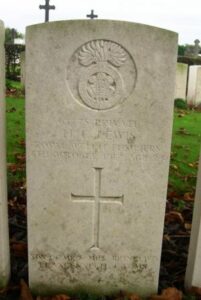
John Nicholas Lewis, Lieutenant, Welsh Regiment. John was born in Islington, the son of Jonah and Mary Lewis. The family later resided at Ffynonau, Llanwrtyd Wells, Breconshire. John was educated at Llandovery from 1903 until 1905. He enlisted into the Army in 1914, and was commissioned into the 8th Battalion, Welsh Regiment. The Battalion was attached to 40 Brigade, 13th (Western) Division, and on 4 August 1915 sailed from Lemnos, arriving at Anzac Cove, Gallipoli on 6 August 1915. From Anzac they marched to Chailak Dere, where, with the 7th Gloucester’s, they were in support of the New Zealanders of the Wellington Regiment and the Auckland Mounted Rifles. On 8 August 1915 an attempt was made to capture the heights at Chunuk Bair, and some men of the 8th Welsh were among the handful of troops who reached and held the peak for a few hours. However, the Battalion was cut to pieces while crossing Apex Ridge. John was in charge of a platoon of Bomb throwers who charged the crest and succeeded in reaching the other side. They came under fire from Hill Q, which should have been cleared, and John was hit in the arms, chest and leg by rifle and machine gun fire. He fell into a gully, and his servant ran to help him, but found him severely wounded. While being bandaged, he asked for a match to light his cigarette, and handed his pocket watch to his corporal for safe keeping. When asked if there was anything else that could be done for him, he is reported to have said “No, lads, I am done for, but go on lads, and do your duty, for there is one above who will take care of us”. Some days later, Lt Wynne Jones took out a party of stretcher bearers to see if they could find John, but they were unable to reach the gully due to heavy Turkish fire, and his body was never recovered. He was 22 years old, and as he has no known grave, is commemorated on the Helles Memorial, Gallipoli, Turkey.
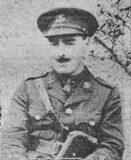
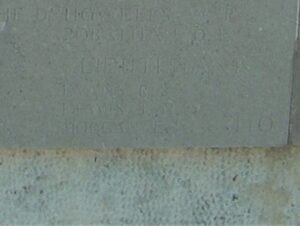
William Arthur Lloyd-Jones, Private, 42173, East Yorkshire Regiment. William was the son of the Rev. Robert and Margaret Jones, of Heneglwys Rectory, Llangefni, Anglesey. William was educated at Llandovery from 1912 until 1915. William enlisted at Bangor into the 1/4th Battalion, East Yorkshire Regiment, which was attached to 150 Brigade, 50th (Northumbrian) Division, and arrived in France in April 1915, moving north to participate in the fighting at St. Julien, during Second Ypres. The Battalion sustained heavy casualties here when counter-attacking a German position. During the summer of 1916 the Division was on the Somme, and fought at the Battle of Flers-Courcelette, the Battle of Morval and the Battle of Le Transloy. After spending a winter on the Somme, the division moved north to Arras, and took part in the Arras Offensive of April 1917, and fought at the First Battle of the Scarpe, capturing the Wancourt Ridge. It then fought at the Second Battle of the Scarpe, before being sent north again to Ypres. Here they fought at the Second Battle of Passchendaele, and remained here for the winter. During March 1918 it was stationed near St. Quentin, and was hit here by the German Spring Offensive of 21 March 1918. After suffering terrible casualties, the Division moved north to Flanders to rest and rebuild, but in April the Germans launched an attack in Flanders, around the Lys, and the Division took part in the Battle of Estaires, and the Battle of Hazebrouck. Following a most trying time on the Somme and Lys battlefields, the Division was withdrawn and sent to IX Corps, then on the Aisne, believed to be a much quieter area. This was unfortunately not the case, as the Division was hit hard by a surprise enemy attack, and fought at the Battle of the Aisne. William was taken prisoner here, and died in a Prisoner of War camp in Germany on 15 September 1918. He was just 19 years old, and is buried at Niederzwehren Cemetery, Cassel, Germany.
Clifford Andrew Loveluck, Second Lieutenant, Royal Welsh Fusiliers. Clifford was the eldest son of Griffith David and Mary Catherine Loveluck, of Central Pharmacy, Aberavon, Glamorgan, and Grandson of Mr. John Davies, Llanwrda House, Llanwrda. Clifford was educated at Llandovery from 1908 until 1910, and on leaving Llandovery Clifford became a Dental student at Guy’s Hospital, London. Clifford was commissioned into the 5th Battalion, Royal Welsh Fusiliers, and sailed from Devonport on the ‘S.S. Caledonia’ for Gallipoli on 19 July 1915. He took part in the landing at Suvla Bay, Gallipoli, on 9 August 1915. Between August and November 1915, there were so many casualties from disease as well as action, that a composite Battalion had to he formed, drawn from the 5th and 6th Battalions RWF. On 11 December 1915 they were withdrawn from Gallipoli and sent to Egypt, where they were deployed on defence of the Suez Canal. In July 1918, Clifford was attached to the 26th Battalion, Royal Welsh Fusiliers, and despatched to the Western Front, where the Battalion formed part of 176 Brigade, 59th Division. The Division took over a sector on 25 July 1918 and came under the command of Third Army. On 21 August 1918 an offensive was launched by the British on the Somme, and the Division took part in the Battle of Albert, where they took part in an attack near Ablainzeville. As the Armies advanced, the 59th was used to follow up the attacking units, to consolidate positions held, and to provide endless working parties. It then took part in the Advance in Flanders, where it operated in the area of the River Lys. At this time it had transferred to the command of Fifth Army (Lieut-Gen. Sir William Birdwood). On 16 October 1918, it was fighting to recapture Lille and after initial fighting made a significant unopposed advance to the Bassée Deule canal. By 23 October, the position had advanced to near Valenciennes on the Belgian border. When the fighting ended on 11 November 1918, the forward units halted north-east of Tournai, in Belgium. Clifford had been taken ill during this last period of the war, and had been sent to the Base Hospital near Boulogne to recover. However, he sadly died there on 20 November 1918, aged 24, and is buried at Terlincthun British Cemetery, Wimille, France.
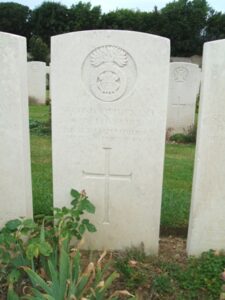
Claude Bruce Matheson, Second Lieutenant, Rifle Brigade. Claude was born on 4 October 1891, the son of the Rev. John Matheson and Susan Ewan Matheson, of Strathnairn, Inverness. Educated at Glenalmond and Keble College, Oxford, he became Assistant Master at Llandovery College prior to the war, where he trained the O.T.C. In 1916, he played cricket in the School v Masters Match and scored 76 runs, not out. Claude was commissioned on 26 June 1917 into the 5th Battalion, Rifle Brigade. He was posted to the 2nd Rifle Brigade after training, which was attached to 25 Brigade, 8th Division. On 19 September 1917 the Battalion relieved the 2nd Battalion, Royal Berkshires in the trenches in the St. Yves-Warneton Sector of the front. Claude joined his Battalion on 21 September 1917. On 23 September 1917 Claude was in the trenches with his battalion in front of La Basseville, Warneton, when a German raiding party was spotted while cutting the Battalion’s wire. In their attempt to bomb their way into the position, Claude was killed. He was 25 years old, and is buried at Prowse Point Cemetery, Warneton, Belgium. Many thanks to Terry MacQueen for the photograph.
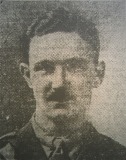
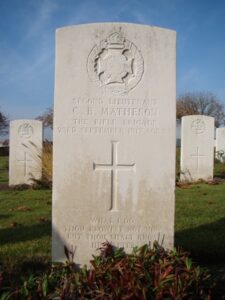
Harold Gostwyck May, Second Lieutenant, Dorsetshire Regiment. Harold was born on 16 May 1887, the son of Richard Cooke May, and Emma Jane May, of Sherborne, 77, Woodside Green, London. He was educated at Sherbourne School, Dorset from 1902 until 1907, and was a Prefect and head of house (Harper House), He was Captain of the School Cricket Xl in 1907, played rugby for the School XV in 1905 and 1906, and also represented the School at boxing in 1907. On leaving Sherbourne School, Harold pursued an academic career, and graduated M.A., and became Assistant Master at Kelly College, Trinity College, Dublin from 1907 until 1911. Then during 1911 to 1912, he was Assistant Master at Llandovery College. He left Llandovery in 1912 and later that year joined the Staff of Clifton College, where he remained until 1914, before returning briefly to Sherbourne School later that year to teach French and German during the Christmas Term. Harold is described during his time at Llandovery as being a notable Games Master. A brilliant batsman and wicket keeper at cricket, and also a first class footballer. He was also an artist of some repute whose sketches appeared in the Illustrated London News. In 1915 Harold had been commissioned, and served on the Western Front with the 1st Battalion, the Dorsetshire Regiment. The Battalion was attached to 15 Brigade, 5th Division, and was in the area north of the Ypres-Comines Canal. The 1st Dorset’s were sent to relieve 1st Lincolns in a position under heavy shell fire, and around this time Harold was at International trench, St. Eloi, when some 40 Germans attempted a breakthrough. Harold was wounded in this action on 14 March 1915, just before his Battalion was relieved by the Bedfordshire Regiment, and he sadly died of his wounds on 28 March 1915, aged 27. Harold is buried at Boulogne Eastern Cemetery, France. Attached is a photo of the young Harold, whilst at Sherbourne School, courtesy of the Sherbourne School Archives.
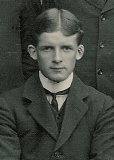
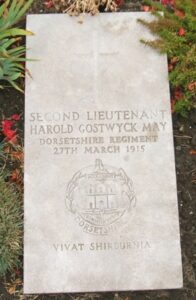
Stanley Gibson McMurtrie, M.A., Chaplain 4th Class, Army Chaplains’ Department. Stanley was born in 1877 at Frome, the son of Hugh and Annie McMurtrie, of Bank House, Highbridge, Somerset. Stanley was educated at Llandovery between 1893 and 1896, when he won an Open Mathematics Exhibition to St. Catherine’s College, Cambridge in 1896. He played rugby for St. Catherine’s, and graduated B.A. in 1899. Stanley maintained his association with Llandovery, and played cricket in the Old Boys’ Match at the School in 1897. He also contributed to the College Building Fund in 1899. In 1903 Stanley became curate at Grange Sylvae, West Shankhill, Belfast, where he remained until 1905. He then served at Seapatrick, Barbridge, until 1907. He was then appointed Ministering Canon at Kilkenny Cathedral, Ireland, becoming Curate of the Cathedral in 1908. Further callings saw him at St. Saviour’s, Woolcott Park, Bristol, and in 1912 he was ministering at St James’s with All Saints, New Brighton, Birkenhead. On 14 February 1916 Stanley applied to join the Royal Army Chaplain’s Department, and enlisted as a Chaplain to the Forces on the following day. He was passed as medically fit, and was sent to the 60th Division which was serving on the Western Front in June 1916. In November 1916, the Division moved to Salonika, and then to Palestine in June 1917. However, Stanley had contracted trench- fever and was later invalided home. He was discharged from the Army in 1917. He then became the Vicar of Egremont, Cheshire, but he had never really recovered from his illness on active service and died at 14, Fitzroy Square, St. Pancras, London on 14 June 1919, following an operation. Stanley was 41 years old, and is buried in the churchyard at St John’s, Egremont, Cheshire.
Edward De Quincey Mears, Second Lieutenant, Essex Regiment. Edward was the son of the Rev. Edward Mears and Mary Florence Mears, of Little Bardfield Rectory, Braintree, Essex. Edward was educated at Milton Abbas School, and later at Llandovery College from 1908 until 1911. Edward was awarded a Classical Scholarship to Worcester College, Oxford, and a Goldsmith’s Classical Exhibition. In 1912 to 13 he was awarded 2nd. Class Moderations, Oxford. Edward had served in the University O.T.C., and at the outbreak of War, he joined the University and Public Schools Battalion, Royal Fusiliers. He was commissioned into the Essex Regiment in December 1914, and posted to their 10th Battalion, which was attached to 53 Brigade, 18th (Eastern) Division. On 25 May 1915 the Division landed in Boulogne, and didn’t see its first major action until July 1916 when it took part in the Battle of Albert. Edward was one of four Lieutenants in ‘D’ Company, 10th Essex, who took part in the opening attacks of the Battle, on 1 July 1916. His Battalion took its objectives, and then went into support. On 12 July 1916, it was reported that the Germans had re-taken Trones Wood, and the Battalion was to take part in an early morning attack on 14 July to clear the Wood. They came under heavy shelling while positioned in Trones Alley and Bernafay Wood awaiting instructions to move, and it was here that Edward was killed that day. He was 23 years old, and has no known grave, and so is commemorated on the Thiepval Memorial, France.
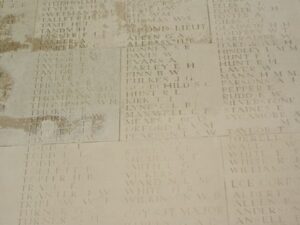
David Lloyd Popkin Morgan, MC, Captain, Welsh Regiment. David was the son of David Henry and Jane Sybil Morgan, of 98, Bryn Road, Swansea, formerly of 11, Langland Road, Mumbles. David was educated at Llandovery from 1900 until 1903, and was a popular sportsman in the Swansea area, and well known at Mumbles as a keen yachtsman. David was a Metallurgist and Assayer by profession, and had worked as such in Peru, South America. On joining the Army, David was commissioned on 1 October 1915 into the Pembrokeshire Yeomanry. During November 1915 the Battalion dismounted and moved to Egypt, landing during March 1916. Here the Brigade was absorbed into the 4th Dismounted Brigade. On 2 February 1917 the Pembroke Yeomanry merged with the Glamorgan Yeomanry, to form the 24th Battalion, Welsh Regiment, and joined 231 Brigade, 74th (Yeomanry) Division. The Division marched into Palestine the following month, and fought at the Three Battles of Gaza, before capturing Jerusalem during December 1917. In November 1917, David Morgan was awarded the Military Cross for his part in the attack on Beersheba, during the Third Battle of Gaza. In February 1918, David’s Company was given the honour of guarding the Holy Sepulchre at Jerusalem. Sadly, David was killed soon after, when his Battalion was ordered into a night attack on a hill at Selwad. The action took place in thick fog, and it was here that David was killed in action when his platoon came under heavy fire on 9 March 1918. He was 30 years old, and is buried at Jerusalem War Cemetery, Israel.
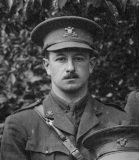
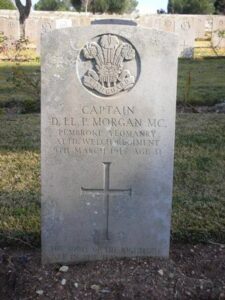
Hugh ap Gwilym Morris, Captain, Royal Army Medical Corps. Hugh was born in 1884, the son of William and Caroline Morris, Agent for the Glanllyn Estate, Bala, North Wales. Hugh was educated at Llandovery from 1896 until 1904, where he was a prefect, and described as a good cricketer. After leaving Llandovery, Hugh went up to Oxford, where he graduated B.A. in 1908. While at Oxford he was a ‘reserve’ Blue at rugby. He also played rugby for several London Clubs including London Hospital. In 1911 Hugh married Elsie Taplin and completed his studies at London hospital Medical College, where he qualified M.B. in 1914. At the outbreak of War, Hugh enlisted in the Army and was commissioned in the R.A.M.C. in January 1915. By now he had two children, and on 25 July 1915 he arrived in France with the 54th Field Ambulance Unit, which was attached to the 18th (Eastern) Division. In 1916 Hugh was promoted to Captain. By now the Division was on the Somme, and were in the thick of the Battle of Bazentin Ridge. On 14 July 1916 Hugh was killed outright while attempting to save the life of a wounded soldier, under circumstances for which he was recommended by his Commanding Officer for the award of the Victoria Cross, but sadly this was not granted. Hugh was 32 years old, and had been described by his Commanding Officer as “a pattern of unselfishness; considering himself last; who died as he had lived. A very popular officer who would be greatly missed.” Hugh is buried at Peronne Road Military Cemetery, Maricourt, France.

John Herbert Morris, Second Lieutenant, Welsh Regiment. John was the youngest son of Watkin and Elizabeth Morris, of 10, The Terrace, Cwmavon, Glamorgan, the Manager of the Duchy Colliery, Cwmavon, and the Nephew of Herbert Eccles, Manager of the Briton Ferry Steelworks, Glamorgan, who resided at Broadway Mansion, Laugharne. John was educated at Llandovery from 1904 until 1911, and in 1915 was commissioned into the 20th Battalion, Royal Welsh Fusiliers. He later transferred into the 6th Battalion, Welsh Regiment, which was the Pioneer Battalion to the 1st Division. They were used to clear the battlefields after the July battles on the Somme, and then to dig forward and communication trenches when the line moved forward. It was while engaged upon this work near Fricourt that John was killed on 21 September 1916. He was 25 years old, and is buried at Flatiron Copse Cemetery, France.

Robert Leslie Wilmott Nicholl, Private 17686, Welsh Regiment. Robert was the son of Edward Beynon Nicholl and Annie Winifred Nicholl, of Llwyncelyn, Llandovery. Robert was educated at Llandovery from 1907 until 1912. He enlisted at Swansea into the 14th Battalion, Welsh Regiment, which was part of 114 Brigade, 38th (Welsh) Division. The Division had landed in France in December 1915, and moved to positions near Armentieres, where they were initiated into trench warfare. Robert was wounded here, and evacuated to the Base Hospital at Calais, where he died of Wounds on 4 April 1916, aged only 19. He is buried at Calais Southern Cemetery, France.
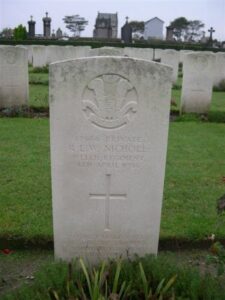
Augustus Charles Owen, MC, Lieutenant, Somerset Light Infantry. Augustus was the younger son of Sir Hugh Charles Owen and Lady (nee Martha Roberts Lewis) Owen, of The Laurels, Goodwick, Pembrokeshire. Augustus was known in School as Gus, and was educated at Llandovery College in 1912. After leaving Llandovery College, he worked for the London and Provincial Bank at Tenby. In 1915 Gus enlisted, and was commissioned into the 5th Battalion, Worcestershire Regiment on 16 May 1916. Gus was later transferred into the 8th Battalion, Somerset Light Infantry, assuming the rank of Acting Captain. The Battalion was attached to 63 Brigade, 37th Division. They took part in the Attack on the Gommecourt Salient, during the first phase of the Battle of the Somme. The 37th Division fought at the Battle of the Ancre. They then moved in March, 1917 and took part in the First Battle of the Scarpe, where they captured Monchy le Preux. They then took part in the Second Battle of the Scarpe, and the Battle of Arleux before moving north to Ypres. Here, they fought throughout the Third Battle of Ypres. By 1918 Augustus Owen had been wounded three times and had been Mentioned in Despatches. During March 1918 the Division was at the Somme, and fought during the German Offensive, at the Battle of Albert. On 26 March 1918, Gus was awarded the Military Cross for conspicuous gallantry and devotion to duty. His citation, dated 16 September 1918 reads “At a critical moment, he held his position with a small party of men against an enemy attack delivered after a heavy bombardment. By his fine example of courage and determination, he enabled the line in that part of the field to be restored”. Augustus was killed in action on the Somme just a few months after, on 6 August 1918. He was 22 years old, and is buried at St. Amand British Cemetery, east of Doullens, France.
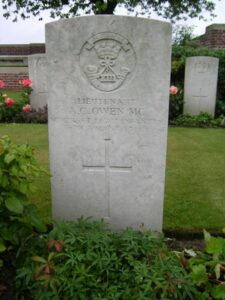
Cyril Gordon Phillips, Second Lieutenant, South Wales Borderers. Cyril was the son of the Reverend Thomas and Mrs. Clara Anne Phillips, The Moat, Kerry, Newtown. Cyril was educated at Llandovery between 1907 and 1910, and was commissioned into the 3rd Battalion, South Wales Borderers on the 8th June, 1915. On the 30th August, 1916 he arrived on the Somme, to join ‘A’ Company, 1st Battalion, South Wales Borderers. The Battalion was attached to 3 Brigade, 1st Division. Cyril saw his first action during the Battalion’s support of the Gloucester’s in an attack on High Wood. The Battalion remained on the Somme for the duration of the Battles there in 1916, and they followed the German retreat to the Hindenburg Line in early 1917. The Division was then briefed for an operation on the Flanders Coast, and moved there during the Summer of 1917. While training on the coast, the Battle of Third Ypres had stalled in the mire, and the Division were recalled to Ypres, where they fought at the Second Battle of Passchendaele. During the Battle of Passchendaele, Cyril’s Battalion found themselves at Goudberg Spur, northwest of Passchendaele Village. In atrocious weather, the Battalion attacked the strategic strongholds known as ‘Virtue’ ‘Virile’, ‘Vocation’ and ‘Void’. It was during these attacks that Cyril was killed in action on 10 November 1917. He was 25 years old, and has no known grave, and so is commemorated on the Tyne Cot Memorial, Passchendaele, Belgium.
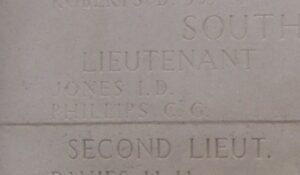
Thomas William Powell, MC, Captain, Tank Corps. Thomas was the son of David Henry William and Brittania Powell, of The Limes, Brize Norton, Bampton, Oxfordshire. Thomas was educated at Llandovery between 1911 and 1913, where he was in the successful School XV of 1912-1913, when his brother captained the side. He scored the School’s first try against Christ College, Brecon, during that season. At the outbreak of War, Thomas enlisted in the 21st Battalion, London Regiment (1st Surrey Rifles). On 3 December, 1914 he was commissioned into the 9th Battalion, Welsh Regiment. The Battalion became attached to 58 Brigade, 19th (Western) Division. The Division assembled around Bulford during September 1914. Divisional training was completed near Tidworth, from March 1915, and the Division crossed to France during July 1915, moving to positions near Loos. The Division fought during the opening attack of the Battle of Loos, in September 1915. Thomas was recommended for the award of the Victoria Cross for outstanding gallantry at Loos, but sadly the recommendation was not confirmed. On 17 May 1916 Thomas was transferred into the Machine Gun Corps, and on 3 June 1916, he was awarded the Military Cross in recognition of his outstanding duty in the field. In July 1916, as a Temporary Lieutenant, Thomas was in command of a Section of Tanks, and saw action at Flers-Courcelette, on the Somme. This was the first ever use of tanks on the battlefield. In August 1917, Thomas was badly gassed at the Battle of St. Julien, and as a result of this incapacity, saw no further action in the War, although he was promoted to the rank of Temporary Captain, now in the Tank Corps, on 19 October 1918. Thomas died as of pneumonia, brought on by being gassed, on 24 November 1918, aged 22. He was 22 years old, and is buried at St. Brice Cemetery, Brize Norton, Bampton, Oxfordshire.
Edward John Lymington Price, Able Seaman, Z/236, Royal Naval Division. Edward was born on 15 March 1875, the third son of John R. Price and Catherine Price, of Plasydderwen, Llandovery. He had lived with his brother, George Penry Price, at High Pitfold Farm, Hindhead, Surrey prior to the war. Edward had been educated at Llandovery from 1889 to 1896, before joining the Mercantile Marine around 1905, and completed about nine years service. He left to join the Royal Navy on 9 September 1914, and was posted to the Royal Naval Division early in 1915. The Naval Brigades had been formed from surplus Royal Naval Personnel and Royal Marines, and were used as Infantry. They were originally sent to Antwerp and Dunkirk in September and October 1914 to guard against invasion by the Germans. However Antwerp fell to the Germans soon after, and so many of the RND units were withdrawn to England. After a lengthy period of refit and training the Division moved to Egypt preparatory to the Gallipoli campaign. Landing on 25 April 1915 the Division fought throughout the Campaign on Gallipoli. Here, the Nelson Battalion took part in the diversionary attack at Bulair, before being sent to Anzac on 29 April as ‘Reserves’. After the failure of the attack on Baby 700 on 1 May 1915, the Battalion was transferred to Helles. Edward was wounded during the Third Battle of Krithia, which lasted from 28 June to 2 July 1915, and was evacuated via Hospital Ship to Alexandria. Sadly, Edward subsequently died of his wounds at Alexandria on 5 July 1915. He is commemorated on the Chatham Naval Memorial, Kent. Edward had given a false age upon enlisting, and was recorded as being 29 years old when he died, although he was in fact 40.
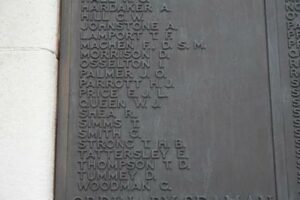
Frederick Thomas Price, Private, 510474, Royal Army Medical Corps. Frederick was the son of Henry Thomas and Susan Price, of Greyhound Hotel, Builth Wells. He was educated at Llandovery from 1908 to 1910. Frederick was living at Surbiton, Surrey and employed by the National and Provincial Bank when War broke out in August 1914. He enlisted immediately, and joined the Royal Army Medical Corps. Frederick was posted to the 2/2nd (London) Field Ambulance. Frederick served on the Western Front from January 1915. He saw action at Ypres and Loos during 1915 and on the Somme in 1916. During the Battle of Passchendaele in 1917, Frederick was serving as a stretcher-bearer at a Field Dressing Station near Chateau Wood, Ypres. The RAMC stretcher-bearers had to carry the wounded across a rough duckboard track to the Dressing Station, where one slip could result in almost certain death by drowning in the Flanders mud. Such was the danger of drowning that a decision was made to evacuate the casualties only in daylight, and it was due to this fact that Frederick was killed by enemy shellfire while performing his hazardous duties on 16 August 1917. He was 23 years old, and is buried at Menin Road South Military Cemetery, Ypres.
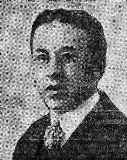
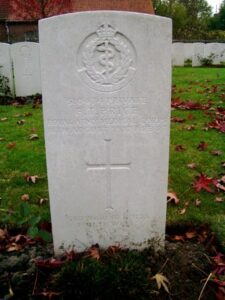
Henry Loyn Pugh, Second Lieutenant, South Wales Borderers. Henry was the son of Thomas and Mary Pugh, of 7, Alban Square, Aberaeron, Cardiganshire. Educated at Llandovery prior to the war, Henry was a Councillor, and also a Scoutmaster at Aberaeron prior to his enlistment in the Inns of Court Regiment. He was commissioned into the 3rd Battalion, South Wales Borderers in October 1915. Henry was then attached to the 1st Battalion, South Wales Borderers, which was attached to 3 Brigade, 1st Division, and he arrived in France on 29 August 1916. The Division was on the Somme, and in early September 1916, were in support of the Gloucester’s and Welsh Regiment in the fighting for High Wood. On 9 September 1916 the 1st SWB were hit by a German bombardment and counter-attack at High Wood, and evacuated to the Casualty Clearing Station at Heilly. Sadly he died of his wounds on 11 September 1916. He was 29 years old, and is buried at Heilly Station Cemetery, Mericourt-L’Abbe, France. (Photo of Henry courtesy of William Jenkyns.)
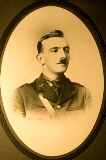
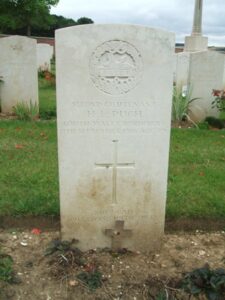
Haydn Eric William Rayner, Second Lieutenant, Oxford & Bucks Light Infantry. Haydn was the youngest son of Henry William and Fanny Gertrude Rayner, of 72, Albany Mansions, Albert Bridge Road, London, and was married to Phyllis Yolande Rayner. Haydn had been educated at Llandovery between 1904 and 1905. He travelled from India to England to enlist in the Army, and on 16 November 1915 he was commissioned into the 3rd Battalion, Oxford and Buckinghamshire Light Infantry. On 13 March 1917 Haydn joined the 6th Battalion, Oxford and Buckinghamshire Light Infantry at Guillemont, on the Somme. The Battalion was attached to 60 Brigade, 20th (Light) Division. The following day, on 14 March 1917 the Germans began to fall back to well prepared positions on the Hindenburg Line, to enable them to man a shorter Front Line. By 16 March 1917 Haydn’s Battalion was in the area of Morval following the German retreat. It was during the fighting on 17 March 1917, that Haydn was killed in action. He was 25 years old, and is buried at the Guards Cemetery, Combles, France.
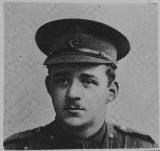
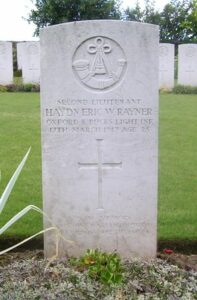
Andrew Gordon Reed, Lieutenant, Royal Welsh Fusiliers. Andrew was the son of Reverend Samuel and Bessie Reed, of Llangyniew, Montgomeryshire. Educated at Llandovery College from 1899 to 1901, Andrew was known as a strong Rugby Forward. He was a partner in the firm of Messrs. Howell, Yearley and Reed, Welshpool, and married Miss Marjorie Alston, daughter of G.G. Alston of Horringer, Bury St. Edmonds, Sussex, on 22 June 1915. Andrew was commissioned into the 7th Battalion Royal Welsh Fusiliers, soon after, which was attached to 158 Brigade, 53rd (Welsh) Division. The Division landed at Suvla Bay, Gallipoli on 9 August 1915 and moved to the Salt Lake the following day. Andrew was killed in Action that day, on 10 August 1915, aged 29, and is remembered on the Helles Memorial, Gallipoli.
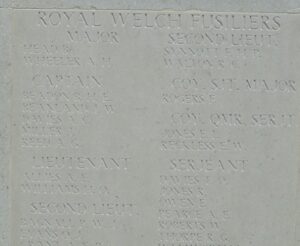
John Cyril Rees, Second Lieutenant, Welsh Regiment. John was the son of John and Charlotte Rees, of Fron, Llandovery and the Husband of Elizabeth Rees, of Velindre, Llandovery. John had been educated at Llandovery from 1904 to 1908, and after leaving School, Cyril served his articles as a land valuer and auctioneer at Llandovery, and was employed in the Land Valuation Office at Carmarthen. In March 1915, he was commissioned into the 3rd Battalion, Welsh Regiment, having formerly served in the Pembrokeshire Yeomanry. Posted to the 8th Battalion, Welsh Regiment, John departed for Gallipoli as part of the 13th (Western) Division. The Battalion was delegated to a Pioneer role, landing on The Gallipoli Peninsula in July 1915, and took part in the August attack at Chunuk Bair. By the autumn of 1915, dysentery was rampant among the troops on Gallipoli and Cyril was one of the many men on Gallipoli to come down with this illness, and was evacuated to a hospital in Alexandria. It was here that Cyril succumbed to his sickness and sadly died on 6 November 1915. He was 24 years old, and is buried at Alexandria (Chatby) War Cemetery, Egypt. Cyril Rees’s brother, Captain Albert Lloyd Rees, Royal Welsh Fusiliers was killed in action at Beersheba, Palestine, exactly two years later to the day, on 6 November 1917.
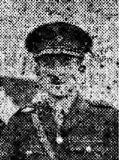
William Ludwig Rees Reynolds, Second Lieutenant, Australian Infantry. William was born in Bundaberg, Queensland on 27 August 1893, the only son of Captain William Rees Reynolds, and Mary Reynolds, of Gilvenan Hill, Dinas Cross, Pembrokeshire, and of ‘The Astor’, Macquarie Street, Sydney, Australia. William was educated at Llandovery from 1909 until 1910, and was also educated at the Church of England Grammar School, North Sydney, Australia. William’s intention was to be a farmer, and on completion of his schooling, he enrolled for a course of Instruction at Wagga Experimental Farm. However, with the advent of War, instead of chasing his dream, William enlisted in the Australian Imperial Force on 18 June 1915, joining the Australian Army Medical Corps at Sydney. William was later posted to England, and became an Instructor, serving on Salisbury Plain. However, William wanted action, and so transferred into the Infantry, and was soon commissioned as Second Lieutenant into the 33rd Battalion, A.I.F., which was part of the 3rd Australian Division. The Battalion had to wait until the emphasis of British and Dominion operations switched to the Ypres Sector of Belgium in mid-1917 to take part in its first major battle; which was the battle of Messines, launched on 7 June. The battalion held the ground captured during the battle for several days afterwards and was subjected to intense artillery bombardment. One soldier wrote that holding the line at Messines was far worse than taking it. The battalion’s next major battle was around Passchendaele on 12 October 1917. The battlefield, though, had been deluged with rain, and thick mud tugged at the advancing troops and fouled their weapons. The battle ended in a disastrous defeat. The 33rd Australian Battalion was called up to attack Crest Farm, where a previously captured pill-box had been re-taken by the enemy. It was in this attack that William was killed, along with five of his brother officers of the Battalion, on 12 October 1917. He was 24 years old, and has no known grave, and so is commemorated on the Ypres (Menin Gate) Memorial, Belgium.

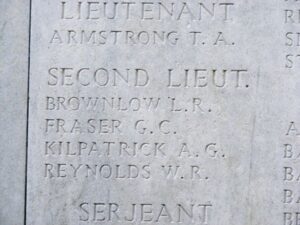
James Meredith Richards, Private, 16609, West Riding Regiment. James was the son of James L. Richards and Ada Janet Richards, of Pantyrathro, Carmarthen. He was educated at Llandovery from 1911 to 1912, and then was in business in London. In September, 1914 James enlisted in the Army at Cardiff, and joined the Dragoon Guards, with the Regimental Number 2293, but was invalided home with a leg wound, and spent some time in Hospital at Manchester. On recovering from his wound, James transferred Regiments, now joining the 2nd Battalion, Duke of Wellington’s (West Riding) Regiment. The Battalion was attached to 12 Brigade, 4th Division, and by the time James joined them, they were in positions on the Somme, where they had fought at the Battle of Albert and the Battle of Le Transloy. On 15 December 1916 the Battalion relieved the Essex Regiment in the front line at Bapaume, in atrocious weather conditions. It is believed that James was killed by a sniper there, on 19 December 1916 as his Battalion’s War Diary records for that date “1 other rank killed and 1 Other rank wounded”. He was 22 years old, and is buried at Sailly-Saillisel British Cemetery, France.
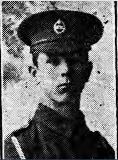
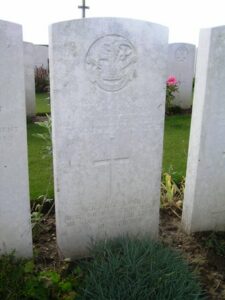
Robert Hugh Owen Roberts, Lieutenant, Australian Infantry. Robert was born in Blackstone, Queensland, Australia in 1894, the youngest son of Lewis and Elizabeth Roberts. His parents were from Llandovery, and after Robert’s birth, moved back to the Golden Lion, Stone Street, Llandovery. Robert was educated at Llandovery between 1907 and 1911, and after leaving Llandovery College returned to Australia and qualified as a Teacher. He was the head of Gleneden State School at Goodna near Brisbane when War broke out in 1914. On 15 October 1915 Robert enlisted into the 41st Battalion, Australian Imperial Force at Victoria, and on 18 May 1916, embarked at Sydney aboard the S.S. Demosthenes, and arrived at Devonport on 20 July that year. Robert was promoted to Lance Corporal on 20 October, and on 24 November 1916 the Battalion embarked for France, gaining their first experience in the trenches near Armentieres. On 15 April Robert was promoted to Corporal, and just a week later he was wounded, suffering a gunshot wound to his jaw. After treatment at the Base Hospital at Wimereux was sent back to Hospital in England. After recovering, Robert had a short period of leave, and on 2 June 1917 sent on an Instructor Course at Kandahar Barracks. From here he was promoted to Second Lieutenant on 1 December 1917, and on 18 December was sent back to France. During January Robert spent two weeks on a Machine Gun course in France, and then rejoined his Battalion in Belgium. When the German Army launched its last great offensive in March 1918, the battalion was rushed south to France and played a role in blunting the drive towards the vital railway junction of Amiens. The Allies launched their own offensive on 8 August 1918, and the 41st Battalion played an active role both in the initial attack and the long advance that followed throughout August and into September. It was during this opening day of the Battle of Amiens that Robert was fatally wounded and died near Cerisy in the Somme Valley, on 8 August 1918. He was 24 years old, and was buried by a Reverend Pugh at Neaivane Wood Cemetery. His grave was moved after the war, and Robert now lies at Villers Brettonneux Military Cemetery, Fouilloy, France. His Battalion history records his death as “among the noble company who lay forever by the Somme, we left our favourite officer ‘Bluey’ Roberts”.

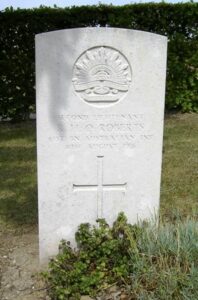
Frank Seymour Jackson Rowland, Private, P/S10744, Royal Fusiliers. Frank was the son of Christopher and Sarah Jane Rowland, of Welwyn Lodge, St. Thomas, Swansea. Frank’s father was a well known Swansea Contractor. Frank was educated at Llandovery from 1899 until 1902. After leaving School, he married Hannah Beatrice, the daughter of Mr and Mrs J.C. Fothergill of Newport, and they lived at 10 Preston Avenue, Newport, Monmouthshire. Prior to enlistment, Frank owned his own Taxi Business there at Newport. At the outbreak of War, Frank enlisted in the 12th Battalion, Royal Fusiliers at London. The Battalion was attached to 17 Brigade, 24th Division. The Division moved to France during August 1915 and marched to positions near Loos, where they took up reserve positions for the main Battle of Loos. The Division was sent into battle on 26 September 1915 at Loos and suffered terrible casualties due to not being properly trained for battle, and were pulled from the line until the following year. In 1916 they took part in the Battle of the Somme, and fought at Delville Wood and Guillemont. It was during this period that Frank was killed in action on 4 September 1916. Frank was 32 years old. His grave was lost, and recovered after the war, and reburied at Terlincthun British Cemetery, Wimille, near Boulogne.

Geoffrey Seymour Rowley-Conwy, Major, Loyal North Lancashire Regiment. Geoffrey was born on 14 September 1877, the third son of Conwy Grenville Hercules Rowley-Conwy, J.P., D.L., of Bodrhyddan, Flintshire, High Sheriff of Flintshire 1876, and formerly a Captain in the Life Guards. The Conwy’s have been associated with the area around Rhuddlan Castle for at least 600 years, when Sir Henry Conwy was Constable of Rhuddlan Castle. The family home is Bodrhyddan, Rhuddlan. Geoffrey was educated at Llandovery between 1889 and 1896, and played rugby at wing for the 2nd XV. On leaving Llandovery, Geoffrey entered Exeter College, Oxford, before embarking on a career in the Army, and in 1911 Geoffrey Rowley-Conwy married Bertha Gabrielle Cochran, daughter of Captain Alexander Cochran R.N. (Retired), of Ashkirk house, Ashkirk, Selkirkshire. They had two children, Geoffrey Alexander, born 8 March 1912 (Colonel The Lord Langford, O.B.E., D.L.), and Rosemary Marian, born 6 June 1915. The family lived in St. Asaph until Lord Langford inherited Bodrhyddan from his father’s elder brother, Admiral Rowley-Conwy, in 1951. On joining the Army, Geoffrey was commissioned in 1901 into the Loyal North Lancashire Regiment. In 1912 he was promoted to Captain, and by the time he landed with the 6th Battalion on Gallipoli in July 1915, he was a Major. The Battalion was attached to 38 Brigade, 13th (Western) Division, and was designated to attack the Turkish stronghold of Chunuk Bair in August 1915. On the night of 9 August 1915, the 6th Loyal’s with the 5th Wiltshire’s, replaced the New Zealand troops who had been fighting for The Pinnacle. The Senior General Staff Officer, 13th (Western) Division, advised Major Rowley-Conwy’s Battalion to dig in on the reverse slope of their intended position of attack, fearing that they might be shelled off the forward slope of the position. However, to dig in on the reverse slope was not possible due to its rocky terrain and an angle of 45 degrees; therefore only a few observation posts were dug. The main positions were taken up on flatter ground known as The Farm, on Helles. The opposing Turkish commander, Mustapha Kemal, assembled two extra Brigades on the east side of the position, giving his troops a numerical superiority of 10 to 1 over the British troops facing him. Just before dawn the Turks swept over the crest of the position in fifteen lines, overwhelming the British defences. In the confusion which followed, Geoffrey was reported as missing only to be confirmed later that he had been killed. He was 37 years old, and has no known grave, and so is commemorated on the Helles Memorial, Gallipoli.
Stanley Francis Salmon, Second Lieutenant, Welsh Regiment. Stanley was born on 17 October 1885, the eldest son of David Salmon, Principal of Swansea Training College, and his wife Mary. Stanley was the Husband of Margaret Lucy Salmon. Stanley was educated firstly at Swansea Grammar School and later Llandovery College from 1898 until 1904. While at Llandovery, Stanley was the School Librarian in 1903, and also a Prefect at Llandingat house, He won an Exhibition to Jesus College Oxford, where he Graduated in history in 1908. On leaving Oxford, Stanley took a post as Assistant Master at George Dixon School, Birmingham. During this time he wrote ‘An Introductory Economic History of England’. At the outbreak of War, he was on holiday in Devon, and walked to Barnstaple to enlist, but was rejected due to poor eyesight. This had been remarked upon while at Llandovery, when he was described as being “an energetic forward on the rugby field, but somewhat handicapped by his short sightedness”. Stanley’s second attempt to enlist, this time at Swansea, also met with failure, and it was not until December 1916 that, at his third attempt, he was accepted for Enlistment at Birmingham, where he became a Private in the Royal Warwickshire Regiment. In July 1917 Stanley was commissioned into the 9th Battalion, Welsh Regiment, which was in Belgium, attached to 58 Brigade, 19th (Western) Division. Stanley took part in the attack on Oostaverne Wood in June 1917 and on 19 July 1917 led a platoon of ‘D’ Company in an unsuccessful attack on some strongly defended buildings known as ‘Junction Buildings’ on a Salient opposite Onraet Wood. Stanley was sadly one of two Platoon Commanders and 14 men killed in this action. He was 31 years old, and is buried at Voormezeele Enclosure No. 3, near Ypres. His son, Stanley Francis Salmon, died at Haverfordwest in 2002.
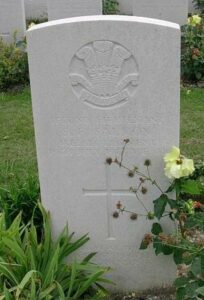
Gilbert Lloyd Sinnett-Jones, Captain, Royal Welsh Fusiliers. Gilbert was born in St George’s, Glamorgan on 19 January 1893, the son of Reverend James Sinnett-Jones and Catherine Jane Sinnett-Jones (nee Lloyd). In 1914 his parents moved to Caerwys Rectory, Flint. Gilbert was educated at Llandovery College between 1905 and 1911, and on leaving Llandovery College Gilbert entered St John’s College, Oxford. At the outbreak of War in August 1914, he immediately enlisted, and was commissioned into the Royal Welsh Fusiliers on 24 November 1914. Gilbert was posted to the 8th Battalion, Royal Welsh Fusiliers, which was attached to 40 Brigade, 13th (Western) Division. In July 1915 the Division sailed for Gallipoli, arriving at Helles on 16 July 1915 and underwent training for the attack on Sari Bair, which was scheduled for the following month. The 8th Battalion was part of the Left Covering Force which was operating in conjunction with the Anzac attacks in August, and they remained at Gallipoli until the evacuation in January 1916. During this period, Gilbert was wounded. After recovering from his wounds, Gilbert re-joined his Regiment, which was by this time serving in Mesopotamia. Gilbert was killed in action during an attack on Sannayat, on the old Babylonian Plain, in the third attempt to relieve the beleaguered Kut-Al-Amara on 9 April 1916. He was 22 years old, and as he has no known grave, he is commemorated on the Basra Memorial, Iraq. His brother Lieutenant James Victor Sinnett-Jones and his brother-in-law Captain Frank Emlyn Williams MC were both killed during the First World War.
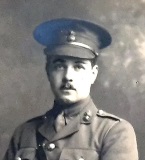
Leslie Ninian Llewelyn Snape, Sergeant, 8548, Royal Irish Regiment. Leslie was the son of Robert and Margaret Snape, of 45 Harbour Road, Barry, Glamorgan. He was educated at Llandovery from 1906 to 1908, and prior to the War, was a solicitor in the High Court of Justice. Leslie enlisted at Bridgend on 2 September 1914 into the Hussars, with the Service Number 16717, and on 14 June 1915 landed in France and transferred into the 2nd Battalion, Royal Irish Regiment, which was attached to 22 Brigade, 7th Division. They fought during the First Battle of Ypres, and helped stop the German advance through Belgium, and in March 1915 fought at the Battle of Neuve Chappelle. During May they fought at the Battle of Aubers Ridge, and at Festubert, before taking part in the Battle of Loos in September. The Division took part in the initial assault north of the Vermelles-Hulluch road, facing the Quarries and a series of strongpoint’s. Suffering badly from British cloud gas, which was not moved sufficiently by the gentle breeze, and badly cut up by German machine gun fire and artillery, the Division nonetheless seized the Quarries and only failed to penetrate the third German line due to the relative weakness of the numbers of men that got through. In the summer of 1916, the Division were on the Somme, and took part in the Battle of Albert, where they captured Mametz, one of the few successes of 1 July 1916. On 4 July 1916 Leslie’s Battalion attacked Strip Trench, in front of Mametz Wood, but it was forced to withdraw to Mametz Village under heavy enemy machine-gun fire. The following day, the Battalion attacked Wood Trench and the south corner of Mametz Wood, but were curtailed by thick belts of uncut wire, and again were compelled to withdraw in the face of a heavy German counter-attack. It was after this fighting on 5 July 1916 that Leslie was reported as missing. His body was never found. He was 24 years old, and as he has no known grave, Leslie is commemorated on the Thiepval Memorial, France.
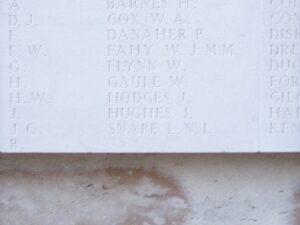
Herbert Gordon Thomas, Second Lieutenant, Royal Welsh Fusiliers. Herbert was born in 1884, the son of the Reverend Thomas Thomas and Mary Anne Lucas Thomas (nee James), of the Vicarage, Abergwili. Herbert was educated at Llandovery College from 1898 to 1904 and later became a schoolmaster, residing at 90, Norfolk House, Knotty Green, Beaconsfield, Buckinghamshire by 1911. Herbert enlisted into the army early in 1916 and on 27 April 1916 was commissioned as Second Lieutenant into the 3rd Battalion, Royal Welsh Fusiliers, which was a Home Service Battalion. Upon completing his training, he was posted to France, where he joined the 10th Battalion, Royal Welsh Fusiliers, which was attached to 76 Brigade, 3rd Division. Herbert joined the battalion at Noeux Les Mines on 31 August 1916, together with two other officers and 24 other ranks. The battalion was rebuilding following a torrid time on the Somme, where it had suffered terribly during the fighting for Delville Wood and Lonely Trench. After a month there, the Division moved back into a rest area for further training before moving back south to the Somme and by 12 November took over trenches at Serre. On the following day, 13 November 1916, the Division launched an assault against the German positions at Serre. The 10th RWF reached Serre village, but the flanking battalions failed to keep up, and heavy losses were suffered, with almost 300 officers and men killed, wounded, or missing, most of the officers in the leading waves were killed that day, including Herbert. The 31-year-old is buried in Euston Road Cemetery, Colincamps, France.
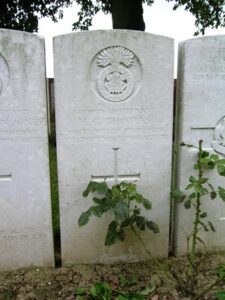
Henry Russell Weeks, Captain, Welsh Regiment. Henry was the son of Alfred and Ada Weeks, of The Lawn, 6, St. Stephen’s Avenue, Ealing, London, formerly of 75, Connaught Road, Cardiff. Henry received his education firstly at Cardiff High School and then at Llandovery College, from 1908 until 1912. After leaving Llandovery, he entered University College, Cardiff, and he was a member of Radyr Golf Club, Cardiff. Henry enlisted in the Army at the outbreak of War, joining the University and Public Schools Battalion, Royal Fusiliers. In January 1915, he was commissioned into the Welsh Regiment, and was posted to its 12th Battalion, which was attached to 104 Brigade, 35th Division. In April the Battalion became a Training Reserve Battalion, and Henry was posted to another (unknown) Battalion of the Welsh, which was on the Western Front. Henry served in France for some 18 months before being wounded, and returned to England for treatment. Upon his recovery, he was promoted Captain, and posted to the 1st Battalion, Welsh Regiment, which was attached to 84 Brigade, 28th Division. The Battalion was in Salonika, and Henry arrived at Salonika in the June of 1918. On 18 September 1918 Henry took part in the British advance against the Bulgarians in the Struma Valley, where he was severely wounded. Henry died of his wounds on 23 September 1918, aged 24, and was buried at Doiran Military Cemetery, Greece. His brother Herbert also died during the Great War.

Herbert Ward Meredith Weeks, Lieutenant, South Wales Borderers. Herbert was the son of Alfred and Ada Weeks, of 175, Cleveland Road, Ealing, London, formerly of 75, Connaught Road, Cardiff and ‘The Mount’ Penylan, Cardiff. Herbert was educated at Cardiff High School and later at Llandovery College between 1907 and 1911. After leaving Llandovery, Herbert entered Queen’s College, Oxford, where he read Mathematics. In 1914 he is recorded as being Secretary of ‘The Cambrian’. On 23 February 1915 Herbert was commissioned into the 2nd Battalion South Wales Borderers, which was attached to 87 Brigade, 29th Division. The Division moved to Gallipoli via Egypt, landing on 25 April 1915. They remained here until evacuation to Egypt on 11 January 1916 and then moved to the Western Front on 15 March. The Division took part in its first major action in France during the 1916 Somme Offensive, and fought at the Battles of Albert and Le Transloy, suffering heavy casualties. In the Spring of 1917 they fought at the Battle of the Scarpe, which was part of the Arras Offensive, and then moved further north to Ypres. Here they fought at the Battle of Langemarck, and then at the Battles of the Menin Road, Polygon Wood, Broodseinde and Poelcapelle, before moving to Cambrai. During November 1917, Herbert was in command of ‘A’ Company of the 2nd Battalion during the Battle of Cambrai. On 23 November 1917 Herbert was badly wounded by enemy machine-gun fire during the advance to the Hindenburg Line, while crossing a river near Marcoing Lock. He died later that day from his wounds aged 25, and is buried at Tincourt New British Cemetery, France. His brother Henry also died during the Great War.
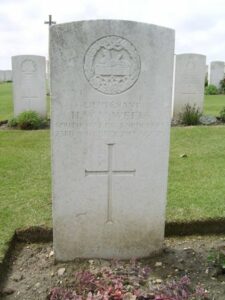
Glynne Williams, Private, 46452, Welsh Regiment. Glynne was the son of David Richard Williams and Catherine Williams, of South Hill, Old Road, Llanelli, later of 2, Tydfil Place, Cardiff. Educated firstly at Llanelli Intermediate School, Glynne was educated at Llandovery from 1910 until 1912, and while at Llandovery, Glynne played rugby for the School XV. After leaving Llandovery, Glynne was articled to Messrs. Jones and Robatham, Chartered Accountants, Dumfries Place, Cardiff. He was a member of Clifton Street Chapel, Cardiff. In August 1916, Glynne Williams enlisted at Cardiff into the 9th Battalion, Welsh Regiment, which was attached to 58 Brigade, 19th (Western) Division, and joined the Battalion on the Somme later that year. The Division then moved North to Ypres, taking part in the Battle of Messines. They then fought during the Battle of the Menin Road. During the opening of an attack east of the Ypres-Comines Canal on 20 September 1917, the 9th Welsh was in Reserve at Hessian Wood. They were called up to repel a German counter-attack, and it was during the ensuing action that Glynne was killed along with 12 of his comrades, during heavy enemy shelling and machine-gun fire. He was 20 years old, and is buried at Woods Cemetery, Zillebeke, Belgium.
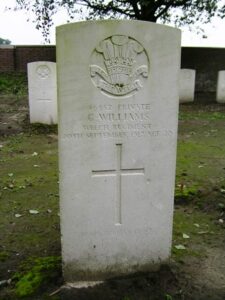
Oswald Morgan Williams, Second Lieutenant, Welsh Regiment. Oswald was the son of Edwin and Mary Williams, of School House, Risca, Monmouth. Oswald was educated at Llandovery from 1908 until 1912, where he was Senior Prefect and Captain of the School. On leaving Llandovery, Oswald entered St John’s College, Oxford, where he graduated with First Class Honours Moderations in Mathematics. He enlisted into the Army in 1914, and was commissioned into 16th (Cardiff City) Battalion, Welsh Regiment in early 1915. The Battalion was attached to 114 Brigade, 38th (Welsh) Division, and moved to France during December 1915, taking up positions near Armentieres. In the April of 1916, Oswald was serving with ‘B’ Company of his Battalion at Givenchy, when on 9 April 1916 a raid was made on a German machine-gun emplacement. As they attempted to place a ‘Bangalore Torpedo’ in the enemy wire, a bomb was thrown from the German trenches killing Oswald. He was just 21 years old, and his body was never found. Oswald is commemorated on the Loos Memorial, France.
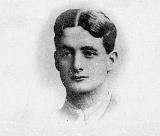
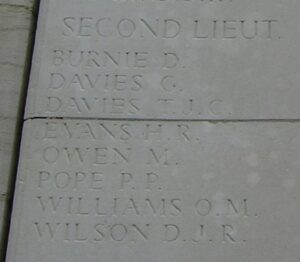
Rice Watkin Williams, Private, PS/1075, Royal Fusiliers. Rice was the son of Henry and Sarah Williams, later of Brynmenyn House, 18, Ninian Road, Cardiff. Rice was educated firstly at Cardiff High School and later at Llandovery College, from 1905 until 1909. It is recorded that during his time at Llandovery Rice was a keen sportsman. After leaving Llandovery, he was employed at Cardiff Docks, until he enlisted into the Army at Cardiff during the early part of the War. Rice joined the 23rd (Public Schools) Battalion, Royal Fusiliers, which was known as the 1st Sportsmen’s Battalion. The Battalion was attached to 99 Brigade, 2nd Division. Rice’s Battalion moved to France to join the Division at Loos in November 1915. In the summer of 1916 the Division were on the Somme, and took part in the Battle of Delville Wood and the Battle of the Ancre, and the ensuing Operations on the Ancre. Rice had been wounded twice before his final action in November 1916. The 2nd Division took part in V Corps attack north of the Ancre on 13 November 1916. Its objective was the ground beyond Munich Trench on the reverse slope of Redan Ridge. Rice was killed in this attack. He was 27 years old, and has no known grave, and so is commemorated on the Thiepval Memorial, France.
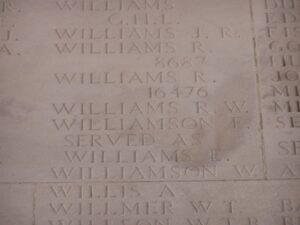
Samuel Mervyn Williams, Second Lieutenant, Nott’s & Derby Sherwood Foresters. Samuel was the son of the late Dr. Richard Henry Williams and of Edith Sophia Williams, of Penfro, St. Bride’s Hill, Saundersfoot. Samuel was born in Pembroke Dock, and was educated at Llandovery, Plymouth and St. George’s College, Kingsway. He passed into Sandhurst on 18 January 1915 and was commissioned into the Sherwood Foresters on 15 August. Samuel was then posted to their 2nd Battalion, which was attached to 71 Brigade, 6th Division, and joined them on the Western Front on 4 October 1916. The Battalion had been in France since landing at St. Nazaire on 11 September 1914. They had rushed to reinforce the BEF on the Aisne, and had then been transferred to Hooge. In 1916 the Division moved south, to take part in the Somme Offensive, and fought at Flers-Courcelette, Morval and Le Transloy. Samuel had only gone into action for the first time on 13 October 1916, but was killed in action just three days later, on 16 October 1916 during the Battle of Le Transloy. He was aged just 19, and is remembered on the Thiepval Memorial, France.
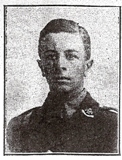
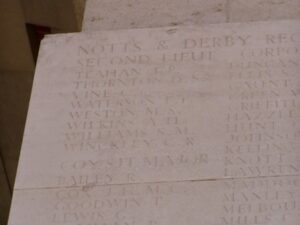
William James Williams, MC, Second Lieutenant, Royal Welsh Fusiliers. William was born in Nantymoel, Glamorgan on 26 November 1896, the only son of Captain William James Williams and his wife Jane, of Maddersfontain Goldmine, Transvaal. After Captain Williams’s death the family lived at Yeoville, Esplanade Avenue, Porthcawl, Glamorgan. William was educated at Llandovery from 1907 until 1911, and after leaving Llandovery, William worked as a clerk in the Education Department of Glamorgan County Council at Cardiff. On 28 December 1915 William enlisted in the 28th Battalion, London Regiment, which was the Artists Rifles Officer Training Corps, based in France. On 3 December 1916 William was commissioned into the Royal Welsh Fusiliers, and joined their 16th Battalion, Royal Welsh Fusiliers, which was attached to 113 Brigade, 38th (Welsh) Division, on 15 January 1917. The Battalion had recently moved to Ypres after being decimated at Mametz Wood. They held the line at Ypres for about twelve months, and on 31 July 1917 fought at the Battle of Pilckem Ridge. William took command of his Company when his Company Commander was wounded shortly after the opening of the attack. One of his fellow officers described him as “one of the best of fellows and appreciated by officers and men. He thoroughly distinguished himself during the fighting at Ypres on 31 July”. On 11 September 1917 the Division was relieved from the Ypres Sector, and moved to the Armentieres area. It was here on 19 September 1917 that William was killed in action. Sadly a few days before his death it was announced that William had been awarded the Military Cross. The London Gazette for 8 January 1918 says that he “rallied his men and kept them well in hand under heavy fire, showing a splendid example of steadfastness to his men throughout.” He was 21 years old, and is buried in Erquinghem Lys Churchyard Extension, France.
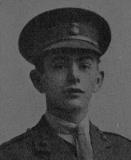
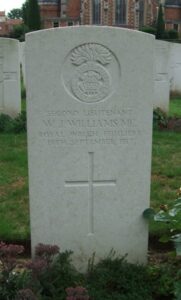
Philip Henry Franklin Wiseman, Lieutenant, The Loyal North Lancashire Regiment. Philip was the son of Rev. Henry John and Elizabeth Eleanor Wiseman, of Clifton College, and Scrivelsby Rectory, Lincolnshire. He was educated at Clifton College, where his father was a Master and Housemaster. On leaving Clifton, Philip went up to Jesus College, Cambridge, with a Scholarship and took a First Class in Classics. He then became an Assistant Master at Llandovery College. In 1914, Philip enlisted in the 18th (University and Public Schools) Battalion, Royal Fusiliers, and served in France during that Winter. He then came home and on 2 July 1915 was commissioned into the 2/4th Battalion, Loyal North Lancashire Regiment. The Battalion was attached to 170 Brigade, 50th Division. On 8 February 1917 Philip’s Battalion embarked for the Western Front. The Division then moved north to Arras, where they took part in the Arras Offensive of April 1917, and fought at the First Battle of the Scarpe, capturing the Wancourt Ridge. They then fought at the Second Battle of the Scarpe, before being sent north again to Ypres. Here they fought at the Second Battle of Passchendaele. It was at Ypres, during 26 October 1917 that Philip was severely wounded in an attack on Mendling and Rubens Farms, in the vicinity of Boesinghe, Belgium. He died from his wounds on 27 October 1917. Philip was 30 years old, and is buried at Solferino Farm, Brielen, Belgium. In the attack in which Philip lost his life, his Battalion sustained 385 casualties.
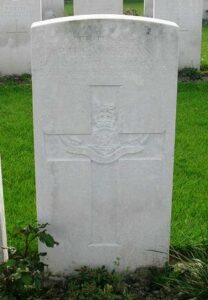
———————————————————————————————————————————————
World War Two 1939-1945

Herbert Thomas Hinkin Arnold, Lieutenant, 247136, Royal Welch Fusiliers. Herbert was born in 1922 in Llangennech, the son of Walter and Lilian G. Arnold, later of Pontardulais, Glamorgan. After receiving his education at Llandovery College, he attended Oxford, gaining his B.A., and being awarded a Blue for association football. At the outbreak of war he joined the Army, being commissioned into the Royal Welch Fusiliers. Herbert was attached to the 2nd North Staffordshire Regiment, which was part of the Allied force in Italy, when he was killed on 23 September 1944. He was 22 years old, and is buried at Florence War Cemetery, Italy.
Edward Leonard Bowen, Captain, 166325, Royal Artillery. Edward was the son of Thomas Edward Bowen, and of Mary Elizabeth Bowen, of Forest Hill, London. He had been educated at Llandovery prior to the war, and joined the Royal Artillery. After training at his O.T.U., Edward was gazetted Second Lieutenant on 18 January, 1941 and posted to his unit, the 166 (Newfoundland) Field Regiment. The unit had been founded by the Newfoundland Government for attachment to the Royal Artillery, and was part of the 1 AGRA of the 1st Army. It went to North Africa, where it fought throughout the campaign in the Western Desert. Later, it was reassigned to Montgomery’s 8th Army during the Italian campaign, and it was here that Edward was killed, during the liberation of Italy, on 10 May 1944. He was 30 years old and is buried at Sangro River War Cemetery, Italy.
David Arthur Charles, Sergeant (Navigator), 1653100, Royal Air Force Volunteer Reserve. David had been educated at Llandovery before joining the Royal Air Force during the war. He was posted to 463 (Royal Australian Air Force) Squadron, which flew the Avro Lancaster III, based at RAF Waddington. On 11 March 1945 David was part of a crew flying Lancaster LM130 JO-N on a target training mission when the aeroplane crashed, killing David. He was brought home for burial at Llanelli Church Cemetery.
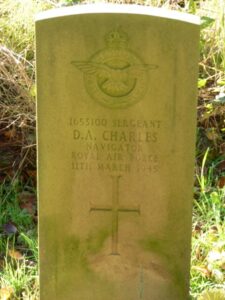
David Norman Anthony Cooper, Flying Officer (Air Bomber), 154093, Royal Air Force Volunteer Reserve. David was the son of Norman Aldred Cooper and of Olive Beatrice Cooper, of Chelsea, London. David was educated at Llandovery, and served during the war with 625 Squadron, a heavy bomber Squadron equipped with Lancaster’s, based at RAF Kelstern in Lincolnshire. David died on 21 February 1945 aged just 21, and is buried at Cambridge City Cemetery, England.
Howard Stanley Davies, Sergeant (Wireless Op/ Air Gunner), 1254976, Royal Air Force. Howard was the son of Ivor Jones Davies and Ethel Davies, of Aberdare. After receiving his education at Llandovery, Howard married Joan Hepworth Davies, of Aberdare, before enlisting into the Royal Air Force, and was posted to 14 O.T.U. On 28 August 1941, Howard was flying aboard Hampden I, Serial P4391, when the aircraft crashed while on a night flying exercise. Howard was 25 years old, and was cremated at Pontypridd Crematorium.
W. M. Davies. Cannot presently be identified.
R. B. Edwards. Cannot presently be identified.
Abel Evans, Private, 6215481, South Wales Borderers. Abel was the son of Rufus and Annie Evans, of Llanelly, Carmarthenshire. After leaving Llandovery he enlisted into the South Wales Borderers, and joined their 2nd Battalion. The battalion was the only Welsh unit to land on Normandy on D-Day, 6 June, 1944. After taking part in some vicious fighting to create and hold the beachhead around Asnelles, Abel was killed just a week into the campaign, on 13 June 1944. He was 22 years old, and is buried at Bayeux War Cemetery, France.
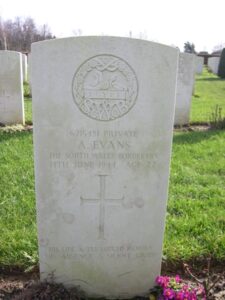
D. A. Evans. Cannot presently be identified.
Herbert Prestyl Evans, Flying Officer (Pilot), Royal Air Force. Herbert was born in 1915, the son of Canon Gruffydd Evans and Mary Evans (nee Roberts), of Newcastle Emlyn. He was educated at Llandovery College before attending Reading University, where he graduated BA. Herbert then became a schoolteacher. In the summer of 1939 Herbert married Ivy Phyllis Joyce Rhodes, of Bury St. Edmunds. He enlisted into the Royal Air Force and trained as a pilot before being posted to 115 Squadron, Royal Air Force, a Bomber Command unit which was equipped with the Vickers Wellington, and based at RAF Marham. On the night of 15 May 1940, Herbert took off from Marham flying a Vickers Wellington IA, Serial P9229 KO-S, on a raid on Duisberg, the first RAF raid on an industrial city in the heart of Germany. Herbert was killed, alongside his crewmates, when their Wellington was brought down over France and crashed into high ground at Plainville close to Bernay during the early hours of 16 May 1940. Herbert was buried alongside his crew in Bernay (Ste. Croix) Communal Cemetery, France.
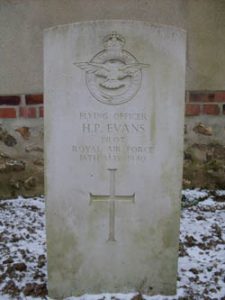
Walter Picton Evans, Corporal, 7382463, Royal Army Medical Corps. Walter was born on 28 April 1913, the son of Evan Walter Evans and Elizabeth Evans (nee Rees), of 3, Nott Square, Carmarthen. He was educated at Carmarthen Grammar School and at Llandovery College, prior to becoming a bank clerk in London, and by the time war erupted was residing at Clifton Gardens, Paddington. Walter enlisted into the army soon after and was posted to the Royal Army Medical Corps. He died as a result of an accident at Cirencester on 14 March 1943. The remains of the 29-year-old were brought home, and he was buried in Carmarthen Cemetery.
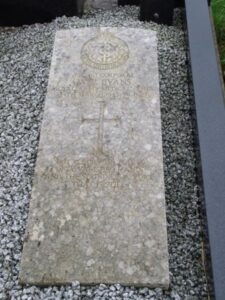
John Wayne Goronwy, MB, Captain, 183683, Royal Army Medical Corps. John was born in 1914, the son of Aneurin Goronwy and Mary Margaret Goronwy (nee Davies), of Llanwonno, Glamorgan. After attending Llandovery College he trained as a Doctor, and at the outbreak of war joined the Royal Army Medical Corps, attached to 174 (H) Field Ambulance. The unit was based in Singapore, and so John must have been captured by the Japanese upon the surrender of the Singapore Garrison in February 1942. John survived two years in captivity, but died on 20 June 1944. He is commemorated on the Singapore Memorial.
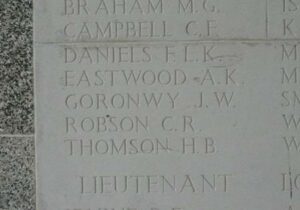
Thomas Howell Brian Griffiths, Sergeant, 1317894, Royal Air Force Volunteer Reserve. Thomas was the son of William Pryse Griffiths and Caroline Griffiths, of Sketty, Glamorgan. After his education at Llandovery, he enlisted into the Royal Air Force, serving with 58 Squadron. The Squadron was part of RAF Coastal Command, flying anti submarine missions, based at St. Eval and equipped with the Halifax, and operated over the Western Approaches. Thomas was killed on one such mission on 27 April 1944. He was 22 years old and is commemorated on the Runnymede Memorial, England.
John Henderson Hide, Sub-Lieutenant, Royal Naval Volunteer Reserve. John was educated at Llandovery, and at the outbreak of war served with the Royal Navy, aboard H.M.S. Acasta. Acasta was a destroyer, which formed part of the task force sent to aid the defence of Norway in 1940, where Acasta served as an escort ship to the Aircraft Carrier HMS Glorious. On 8 June 1940 the fleet was attacked by the German Battleships Scharnhorst and Gneisenau, and after a two hour battle, where Acasta gallantly fought well above her weight, Glorious, Acasta and Ardent, another escort vessel, were sunk by the more heavily armed German ships, although they themselves had been severely damaged. John died that day, and is commemorated on the Portsmouth Naval Memorial.
Waldo Harry Bentley Hiles, DSO, DFC, Squadron Leader, 121330, Royal Air Force Volunteer Reserve. Waldo was born in 1913, the son of Thomas Henry Hiles and Rosamund Sarah Hiles (nee Jones), of Myrtle Hill House, Fforestfach, Swansea. His father, a former steel worker, had made his way up the ladder to being a foreman and engineer, making his money in India before buying the Nelson Hotel, at Red Street, Carmarthen. Waldo was educated at St. Paul’s School, Darjeeling, India, and after the family moved to Carmarthen was educated at Llandovery College. Waldo enlisted into the Royal Air Force Volunteer Reserve soon after the outbreak of war and initially served as a Flight Sergeant. He married Elizabeth Anne Shanley in Witney, Oxfordshire in 1940 and the couple had a son, Jenkin Waldo Hiles. Waldo was commissioned from Flight Sergeant on 1 May 1942, then obviously being a brave and competent officer was soon promoted to Squadron Leader as well as receiving several awards for gallantry. On 12 December 1942, Waldo was awarded the DFC as Captain of a heavy bomber in an attack on Stuttgart whilst serving with 218 (Gold Coast) Squadron, Royal Air Force. The citation to his award read; ‘In November, 1942, this officer captained a heavy bomber, detailed to attack Stuttgart. At one point on the outward flight. Flight Lieutenant Hiles brought his aircraft down to 200 feet while his gunners attacked a goods train and put it out of action. He then flew on to his objective and bombed it. During the return journey, attacks were made on targets on the ground, including four separate attacks on goods trains and, in each instance, locomotives were set on fire; Flight Lieutenant Hiles also attacked an enemy aircraft on an airfield. This officer, who has completed a large number of sorties has invariably displayed outstanding skill and daring.’ In June, 1943 Waldo was awarded the DSO for his high qualities of leadership and devotion to duty with 218 Squadron. The citation which was published in the London Gazette of 11 June 1943 stated: ‘Squadron Leader Hiles has been flying on operations since May, 1941, and has completed numerous sorties since being awarded the D.F.C. He always presses home his attacks in the most determined manner, flying at low altitude regardless of enemy opposition.’ He had completed two full tours of operations with 218 Squadron when he was transferred and posted to No. 3 Group HQ at Exning Hall, effectively taking him off active duties, but on the morning of 24 August 1943 Waldo decided to pay a visit to his former Squadron. After sitting in on the briefing for the raid that night on Berlin, Waldo decided to take part himself. He collected a scratch crew made up of inexperienced airmen from the Squadron, and took control of a Short Stirling III, Serial EH925 IC-C of 623 Squadron. Sadly the Stirling was intercepted by a German night fighter and shot down some 25 miles south of Berlin that night, and the entire crew was lost without trace. Waldo was 30 years old when he was killed that night and is commemorated on the Runnymede Memorial, Surrey. His brother, William Jenkin Joseph Hiles, was killed in 1944.
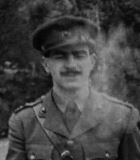
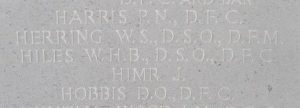
William Jenkin Hiles, Captain, Royal Marines. William was born on 4 January 1915, the son of Thomas Henry Hiles and Rosamund Sarah Hiles (nee Jones), of Myrtle Hill House, Fforestfach, Swansea. His father, a former steel worker, had made his way up the ladder to being a foreman and engineer, making his money in India before buying the Nelson Hotel, at Red Street, Carmarthen. William was educated at St. Paul’s School, Darjeeling, India, and after the family moved to Carmarthen was educated at Llandovery College. William enlisted into the Royal Marines soon after the outbreak of war and on 25 October 1941 was commissioned as a Lieutenant, being posted to No. 40 Royal Marine Commando. A further promotion to Captain followed on 9 October 1943. The Commandos were a newly formed unit, made up from elite soldiers, highly trained and motivated. 40 RM Commando was sent to Sicily in July 1943 and a little later in September it saw action at Pizzio. Later that year the Commando was in action at Termoli, and in 1944 was involved in the fighting at Anzio. At dawn on 9 October 1944, 40 Commando Royal Marines launched a raid on the Southern Albanian town of Saranda. They landed on ‘Sugar Beach’ where they encountered strong resistance from German forces. Having managed to fight their way off the beach they joined up with local partisans and continued their assault, eventually subduing the Germans. With the port of Saranda liberated, German forces on the Greek island of Corfu found their escape route blocked and capitulated to the allies. William, in Command of X Troop, was killed by machine-gun fire during the assault on Saranda on 9 October 1944. The 29-year-old is buried at Tirana Park Memorial Cemetery, Albania. His brother, Waldo Harry Bentley Hiles, had been killed in Germany in 1943.
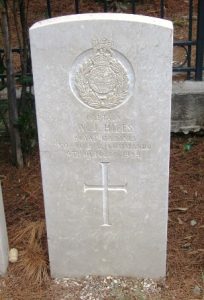
Philip Rice Hughes, Home Guard. Philip was born on 5 February 1907, the son of Arthur Rice Hughes and Elizabeth Hughes, of Farmers Row, Felinfoel. He was educated at Llandovery College before leaving Felinfoel to work in Newport and married Phyllis Mai Hardwick there in 1936. The couple then moved to London and settled at 23, Whittell Gardens, Lewisham. Following the outbreak of war Philip enlisted into the Home Guard. He was killed at home during an air raid on 1 October 1940. The remains of the 33-year-old were brought home and he was buried in Holy Trinity Churchyard, Felinfoel.
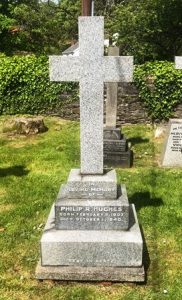
David Andrew Jones, Lieutenant, 203848, Welch Regiment. David was the son of the Revd. W. Joshua Jones, and of Beatrice Morris Jones, of Llanelly, Carmarthenshire. He was educated at Llandovery prior to the war. David was commissioned into the 1/5th Battalion, Welsh Regiment, which was part of the 53rd (Welsh) Division. By 28 June 1944 the battalion had landed in Normandy as part of the reinforcing troops. After helping fight their way out of Normandy, the 53rd Division moved northwards, up past the old WW1 battlefields into Belgium and Holland, where they played a part in Operation Market Garden, as part of XXX Corps. In October 1944 the Division was fighting around the Dutch Town of s’Hertogenbosch, and David was killed here on 26 October 1944. He was 27 years old, and is buried at Uden War Cemetery, Netherlands.
Harold Bowen Jones, Warrant Officer (Air Bomber), 1324221, Royal Air Force Volunteer Reserve. Harold was the son of David and Elizabeth Maud Jones, of Llandovery, and the husband of Winifred Olive Bowen Jones, of Ford, Buckinghamshire. He was posted to 1660 Heavy Conversion Unit at RAF Swinderby in Lincolnshire. On the afternoon of 25 February 1945 Harold was a crew-man aboard Lancaster ME490, which took off on a training flight to demonstrate three-engined landings. After shutting off one engine the Lancaster attempted to land, but stalled and crashed, killing six of her crew of seven men. Harold was 29 years old when he was killed in the crash, and is buried at Llandingat (St. Dingat) Churchyard.
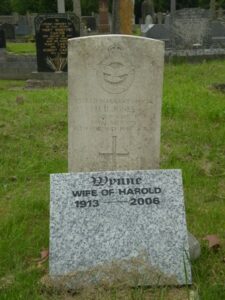
John Stanley Tucker Jones, Corporal, 5829258, Suffolk Regiment. John was the son of Emlyn Lewis Jones and Edith Jones. He was educated at Llandovery, before gaining his M.A. at Cambridge. John married after leaving University, to Florence Mary Jones, of Claughton cum Grange, Cheshire. At the outbreak of war he joined the 1st Battalion, Suffolk Regiment, which was attached to 3rd Division, and landed on D-Day, 6 June 1944, at Queen White Sector, Sword Beach. The battalion quickly assembled in woods near Hermanville, from where they launched several attacks on their designated objectives of coastal gun batteries scattered in the area. John was one of just 5 men of the battalion killed during that first day. He was 28 years old and is buried at Banneville-La-Campagne War Cemetery, France.
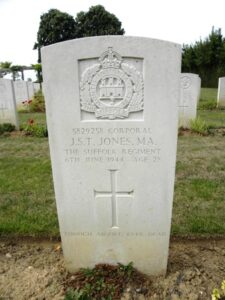
Tommy Abel Jones, Sergeant, 932085, Royal Air Force Volunteer Reserve. Tommy was born on 29 August 1920, the son of John Elias Jones, and of Anne Jones, of Caerau, Llanwenog. Upon leaving Llandovery he enlisted into the Royal Air Force Volunteer Reserve and after qualifying as an observer was posted to 57 Squadron, RAF. Following the outbreak of war the squadron moved to France as part of the Air Component of the BEF, before evacuating to England on 21 May 1940. After a brief stay at Wyton the squadron moved to Scotland to commence anti-shipping strikes against the coast of Norway. The squadron moved to Feltwell in November 1940 to re-equip with the Vickers Wellington and in September 1942. On the night of 21 July 1942 Tommy took off from Feltwell aboard Wellington III, Serial X3584, which was part of a force sent to bomb Duisberg. The aircraft was lost early on 22 July 1942, possibly due to being brought down by flak, and no trace of her or her crew of five was ever found. Tommy was 21 years old when he died that night and is commemorated on the Runnymede Memorial, Surrey.
William Arthur Phillips Jones, Pilot Officer (Pilot), 43100, Royal Air Force. William was born in 1915, the son of Arthur Treharne Jones and Elizabeth Jones (nee Phillips), of 183, Felinfoel Road, Llanelli. He was educated at Llandovery College before being commissioned as Second Lieutenant into the 4th Welch on 29 October 1938. William then transferred to the Royal Air Force, and after training as a pilot was posted to No 2 School of Army Cooperation, based at Andover. William was flying a Bristol Blenheim IV, Serial T2321 on 20 November 1940 when it stalled on overshoot and crashed three miles west of Thruxton, killing him instantly. The remains of the 25-year-old were recovered from the wreckage and he was brought home for burial in Holy Trinity Churchyard, Felinfoel.
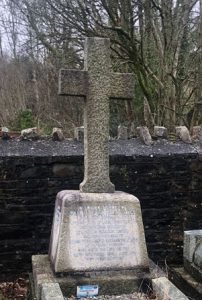
Rendel Forrest Lewis, MA, LLB, Flight Sergeant, 129118, Royal Air Force Volunteer Reserve. Rendel was the son of the Revd. J.D. Vernon and Amelia Mary Lewis of Brecon. After being educated at Llandovery, he trained as a Solicitor, finally becoming a Barrister of law. At the outbreak of war he joined the Royal Air Force, becoming an Instructor in Navigation at the RAF College Cranwell. Rendel volunteered for active service, and was posted to 630 Squadron, a Main Force Squadron in 5 Group, equipped with the Lancaster Bomber. On 8 December 1944, 205 bombers of 5 Group left Britain, on a mission to bomb the Urft Dam in Germany. The bombing was affected by the heavy cloud cover and was unsuccessful, but one plane was lost over Germany, and it contained Rendel among its crew. Rendel was killed when his Lancaster was brought down that night. He was 29 years old and is buried at Rheinberg War Cemetery, Germany.
David Llewellyn Maddoc, Sub-Lieutenant, Royal Naval Volunteer Reserve. David was the son of W. E. Maddock and Mary Gertrude Maddock, of West Kensington London. He was educated at Llandovery, and from there enlisted into the Royal Navy, being posted to HMS Landrail, an RNAS shore base called RNAS Machrihanish, based at Argyll and Bute, Scotland. Little else is known of David, but he died on 27 April 1944, aged 20, and is buried at West Drayton Cemetery, England.
Herbert Thomas McNeil, Lance Bombardier, 992598, Royal Artillery. Herbert was born on the 6 May 1912, the son of William Gething McNeil and Alice Mary McNeil, of Port Talbot. He served with 2 A.A. “Z” Regiment, Royal Artillery, which was an Anti Aircraft unit based in Singapore. Herbert must have escaped the Japanese capture of Singapore in February, 1942 and returned home, where he died on 6 August 1942. He was 30 years old and is buried at Cwmavon (St. Michael) Churchyard, Wales.
David Thomas Megins, Gunner, 1835097, Royal Artillery. David was the son of John and Janet Louise Megins, of Maesteg, Glamorgan. He served with 239 Battery, 77 H.A.A. Regiment, Royal Artillery, based at Singapore. David was captured at the fall of Singapore, and taken prisoner by the Japanese in February 1942. On 29 November 1943 David was one of 640 sick prisoners taken aboard the Suez Maru, which was tasked with taking the men to Java. Escorted by a minesweeper W-12, the Suez Maru set sail from Port Amboina but while entering the Java Sea and about 327 kilometres east of Surabaya, Java, Netherlands East Indies, the vessel was torpedoed by the American submarine USS Bonefish commanded by Cdr. Tom Hogan. The ship started to list as water poured into the holds drowning hundreds of men. Some managed to escape the holds and swam away from the sinking ship. The Japanese mine sweeper W-12 picked up the Japanese survivors, leaving between 200 and 250 men in the sea. At 14.50, the minesweeper, W-12, under orders from Captain Kawano, opened fire, using a machine gun and rifles. Rafts and lifeboats were then rammed and sunk by the W-12. The firing did not cease till all the prisoners were killed, the minesweeper then picked up speed and sped off towards Batavia (Jakarta). Sixty-nine Japanese had died during the attack, 93 Japanese soldiers and 205 Japanese sick patients were rescued by the Japanese. 547 Allied prisoners were killed, including David. He was 21 years old and is commemorated on the Singapore Memorial.
Charles Peter Dovey Price, DFC, Flight Lieutenant, 41736, Royal Air Force. Charles was the son of John Dovey Price and Anne Ella Myfanwy Price, of Thames Ditton, Surrey. After receiving his education at Llandovery, Charles joined the Royal Air Force, and after training was posted to 97 Squadron, based at Abingdon. In July 1940 Charles was awarded the Distinguished Flying Cross for a dare devil feat, his citation stating; ‘this officer was pilot of an aircraft engaged in a bombing raid on an aircraft factory at Bremen. In spite of extremely difficult conditions, he successfully located his target and carried out a determined attack, at an altitude of 500 feet, in the face of anti-aircraft fire. On the return journey P/O. Price engaged three Messerschmitt 110s which he had observed flying above the aerodrome at Borkun. By skilful manoeuvring he enabled his rear gunner to fire bursts at one of the enemy aircraft, which appeared to be hit, and then engaged a second fighter which was shot down into the sea with its port engine on fire. P/O Price displayed great courage, initiative and determination throughout the operation.’ Sadly Charles was killed on 8 November 1941 while on another mission over occupied Europe. He was just 20 years old and is commemorated on the Runnymede Memorial.
William Larry Rees, Pilot Officer, 63845, Royal Air Force Volunteer Reserve. William was born in Llysgarenig, Glanamman on 6 July 1920, the son of William John and Rachel Mary Rees (nee Evans). He entered Llandovery College in 1931, and became Captain of the school cricket team. In 1938 he won a scholarship to Corpus Christie, Oxford, but with the outbreak of war volunteered to serve with the Royal Air Force, and trained as a Pilot before being commissioned as a Pilot Officer on 20 April 1941 and posted to 102 Squadron, at RAF Topcliffe. On 26 July 1941 William took off from Topcliffe, piloting Armstrong Whitworth Whitley Z-6576, which was bound for Hanover. The aircraft was shot down over the North Sea on the return journey, killing William and his crewmen. William was 21 years old, and is commemorated on the Runnymede Memorial, Surrey.
George Peter Ritchie, Sub Lieutenant, Royal Navy. George was educated at Llandovery College, and served with 823 Squadron, Fleet Air Arm, aboard the Aircraft Carrier H.M.S. Glorious. She had originally been built as a Battle Cruiser, and was converted to an aircraft carrier in 1930. Soon after the Germans launched their invasion of Norway in 1940, Glorious was sent there as part of a Naval Task Force sent to aid the defence of the country. On 8 June 1940 the fleet was attacked by the German Battleships Scharnhorst and Gneisenau, and after a two hour battle, Glorious, along with her escorts Acasta and Ardent were sunk by the more heavily armed German ships, although they themselves had been severely damaged by the Royal Navy. George was killed when Glorious sank that day. He is commemorated on the Lee-on-Solent Memorial, England.
Thomas John Foster Roberts, Lieutenant, 203580, Royal Engineers. Thomas was the son of Christopher Emlyn Roberts and Mary Roberts, of Llanelly, Carmarthenshire. He was educated at Llandovery, and joined the Royal Engineers at the outbreak of war, serving with their 20th Field Company, which was part of the Allied invasion force which landed at Normandy in June 1944. Thomas was killed during the first few weeks of the fighting, on 27 June 1944. He was 23 years old and is buried at St. Manvieu War Cemetery, Cheux, France.
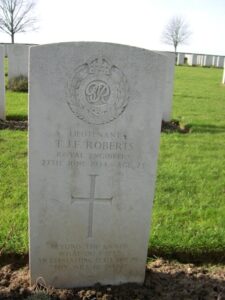
Roy Stephen Shellard, Warrant Officer Class II, 3955961, Welch Regiment. Roy was born in December 1909 in Newport. He was a regular soldier, having served with the 1st Battalion, Welch Regiment at the outbreak of war, with whom he had made his way through the ranks to Warrant Officer Second Class. The battalion was in Palestine at the outbreak of war, but quickly moved to the Western Desert. They formed part of the garrison on the Island of Crete, which was attacked by a German Airborne assault force on 21 May 1941. The British defence turned into a shambles, badly led by their officers, and the 1st Welch suffered terrible casualties over the coming days of heavy fighting. Roy was killed sometime between the 24 and 27 May 1941. He was 31 years old and is commemorated on the Athens Memorial, Greece.
George Sumner Stead, Flight Lieutenant, 70644, Royal Air Force. George was the son of Charles Clement Stead and Adelaide Mary Stead; husband of E. Margaret H. Stead, of Iver, Buckinghamshire. After leaving Llandovery he gained his MA at Cambridge. George enlisted into the Royal Air Force at the outbreak of war, and was posted to 203 Squadron. Shortly before the start of the war the squadron was re-equipped with Short Singapore and in 1940 with Bristol Blenheims. The squadron flew patrols over the Red Sea and Mediterranean from Basra, and in 1942 the squadron re-equipped with Martin Baltimore aircraft. George was killed when his Blenheim was shot down on 22 June 1942. He was aged 33, and is buried alongside his fellow crew member at El Alamein War Cemetery, Egypt.
David Rudolph Bentley Thomas (Dolph), Corporal, 14493238, Royal Army Service Corps. ‘Dolph’, as he was known, was the nephew of John Thomas of Llansteffan. He was educated at Llandovery College, and served during the war with the Royal Army Service Corps. Dolph died after the war on 15 March 1947, aged just 20, and is buried in Llansteffan Churchyard.
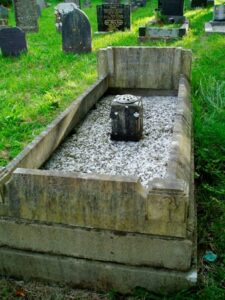
William Glynne Thomas, Lieutenant, 177759, Welch Regiment. William was born on 16 April 1920, the son of William Nicholas Thomas and Lilian Thomas (nee Evans), of Llandaff House, 9, Stone Street, Llandovery. He worked as an Estate Agents Articled Clerk prior to gaining a commission as Second Lieutenant into the Welch Regiment, and was posted to the 1st Battalion the Welch Regiment. The Regiment had been almost wiped out during the Battle of Crete in May 1941, when it was overwhelmed by nine German battalions. Somme 300 survivors reached the British naval base at Sphakia, where they were evacuated to Alexandria. The 1st Welch and the 1st South Wales Borderers were now up against the German Afrika Korps. On 16 June a strong panzer attack was made on the battalion’s position at Sidi Rezegh, and after a terrible time spent defending their positions, the 1st SWB were ordered to withdraw to Sollum on 17 June. The withdrawing troops ran straight into a German attack, 30 panzers and massed German infantry drove them into trap, and 14 officers and 500 other ranks were reported missing. Only four officers and 100 men survived. Meanwhile the 1st Welch were involved in the fierce struggle to hold Benghazi throughout January 1942, but were ordered to withdraw to the Egyptian frontier. The Welch battalions had been split into individual companies during the withdrawal, and met with vastly differing levels of success-many were wiped out by the Germans. Of the 700 odd officers and men of the 1st Welch who fought at Benghazi, only 214 survived. The survivors of the battalion were sent to Khartoum, where it refitted and was brought back up to strength, and then was sent to Palestine to train for the invasion of Italy, landing in July 1944 and joining the fighting on the Rimini Line. William was killed near the Senio River in Italy on 6 December 1944. The 24-year-old is buried in Bari War Cemetery.
J. R. Walters. Cannot presently be identified.
Celt Williams, Flight Sergeant (Navigator), 1316112, Royal Air Force Volunteer Reserve. Celt was the son of Griff and Betty Williams, of Ponthenry, Carmarthenshire. He enlisted into the Royal Air Force, and served in 218 Squadron, a heavy bomber Squadron which flew the Avro Lancaster III, based at RAF Chedburgh. The night of 31 December 1944 saw several Bomber Command raids on Germany, and Celt was killed on one of these when his Lancaster was shot down that night. He was 23 years old and is buried at Reichswald Forest War Cemetery, Germany.
John Keble Williams, Second Lieutenant, 17th Dogra Regiment. John was the son of the Revd. Canon Robert Keble Williams, BA, and of Grace Winifred Williams, of Llanrhian Vicarage, Pembrokeshire. He enlisted at the outbreak of war into the Army, and gained a commission into the Indian Army, being posted to the 10th Battalion, 17th Dogra Regiment. The Regiment fought in the Far East, gaining the Battle Honours of Kota Bahru, Malaya 1941-42, Donbaik, Nunshigum, Magwe, Kennedy Peak, and Burma 1942-45. John died in the Far East on 11 July 1942. He was 20 years old and is buried at Delhi War Cemetery, India.
Post World War Two Casualties
John Garner Jones, MC, Major, 92411, Welch Regiment. John was born in Llandovery in 1911 and was educated at Llandovery College. He was commissioned into the Welch Regiment before volunteering to serve with the Special Service Troops, which became known as No 1 Commando. He was awarded the Military Cross in recognition for gallant services during offensive patrols in Burma (London Gazette 22 March 1945). He survived the war and returned to Alma House, Llandovery where he died on 21 June 1947 aged thirty six. He is not commemorated as an official war casualty.
Arthur John Rosser, Flying Officer, 607156, Royal Australian Air Force. Arthur was born in Swansea on the 16 September, 1929. He was educated at Llandovery College, and joined the Royal Air Force, where he was awarded his Pilots wings on 19 February, 1950. Arthur was posted to 77 Squadron, based at RAF Iwakuni, just 8 miles from Hiroshima in Japan. Arthur was attached to the Royal Australian Air Force, and fought during the Korean War. He died on Saturday 28 March 1953. Arthur is buried at Terendak Military Cemetery, Malacca Malaysia, and is commemorated on the Commonwealth Memorial at the United Nations Memorial Cemetery, Pusan. He was 23 years old.
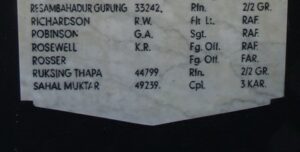
Patrick Francis Cranleigh Swash, 2600130, Flight Lieutenant, Royal Air Force. Patrick was born in Hendon, London on 18 June 1927, the son of Stanley Victor Swash and Florence Kathleen Swash. He was educated at Llandovery College, and at Clare College, and later joined the Royal Air Force, serving at RAF Wunstorf in Germany, which had been used for the Berlin Airlift. Patrick married Elizabeth Gwendolen Hooson in 1950. He was killed in a flying accident at Stactoldenorf, near Minden, Germany while serving with the Royal Air Force on 24 September 1952.
David Michael Whitby-James, Flying Officer, 3510259, Royal Air Force. David was born in Masterton, New Zealand on 10 May 1929. He was educated at Llandovery College before enlisting into the Royal Air Force, serving at RAF Deversoir, probably with 249 Squadron, flying the Vampire jet. David died on the 17 November 1953, aged 24, and is buried at Wayne’s Keep Cemetery, Nicosia, Cyprus.